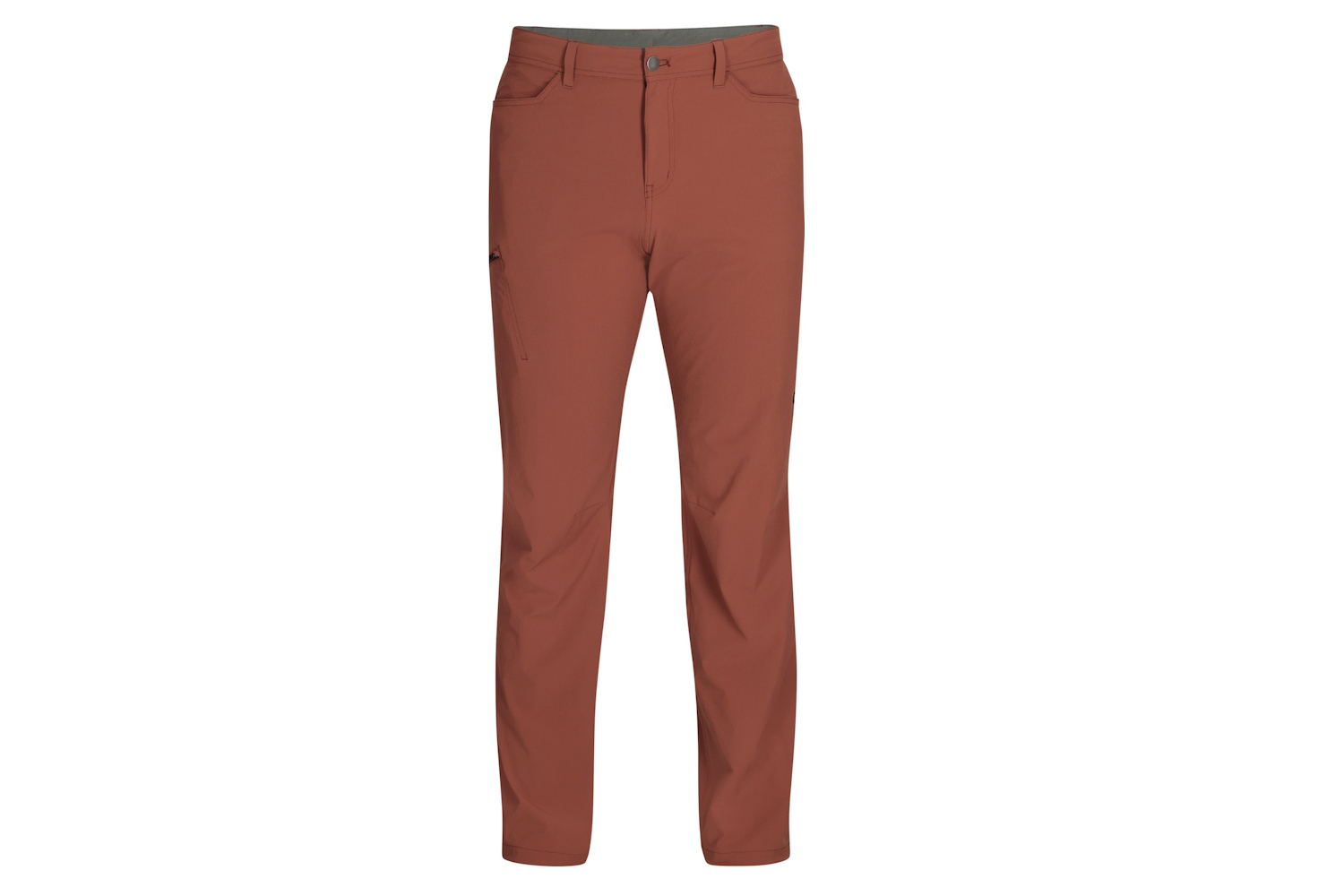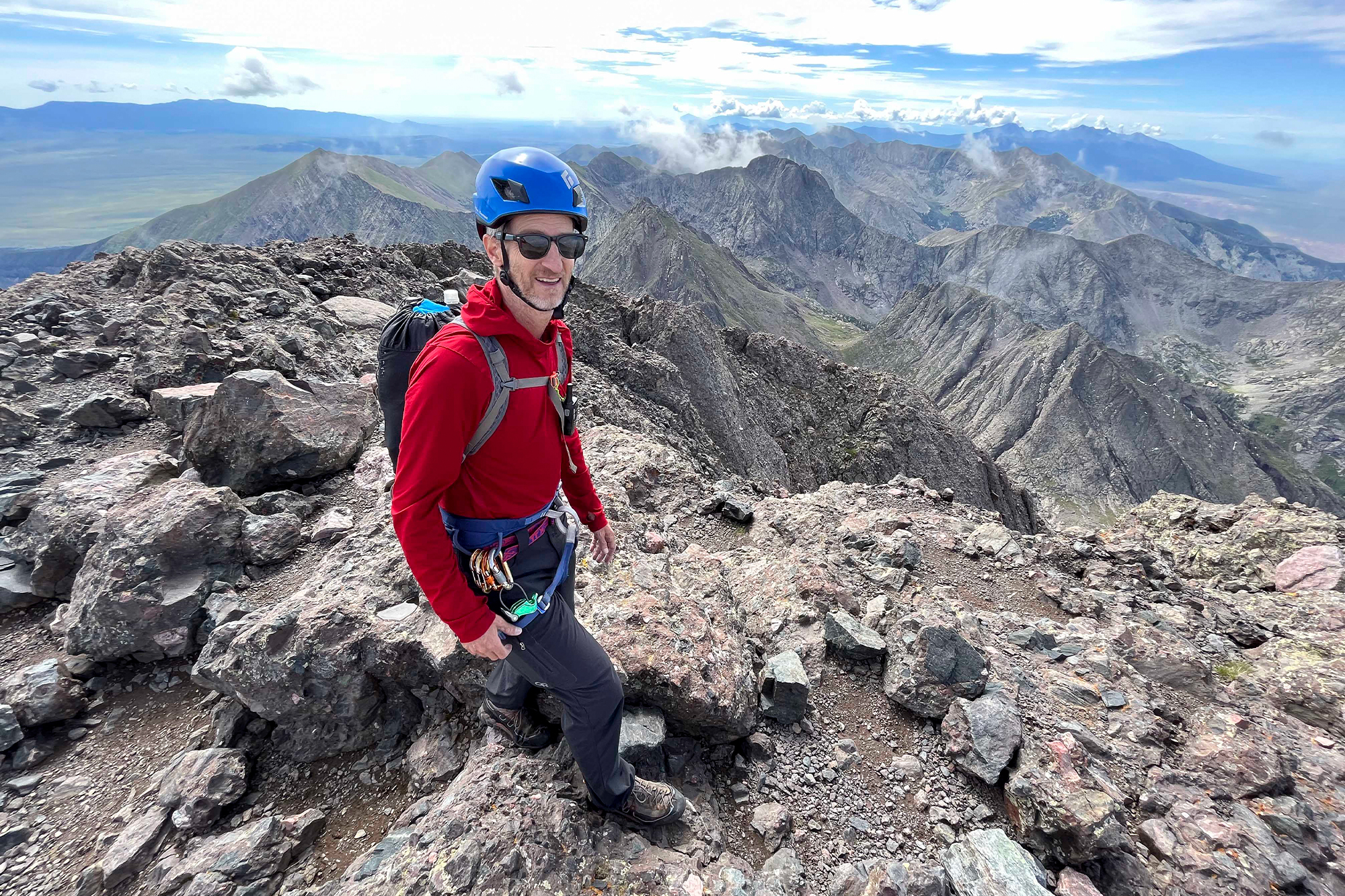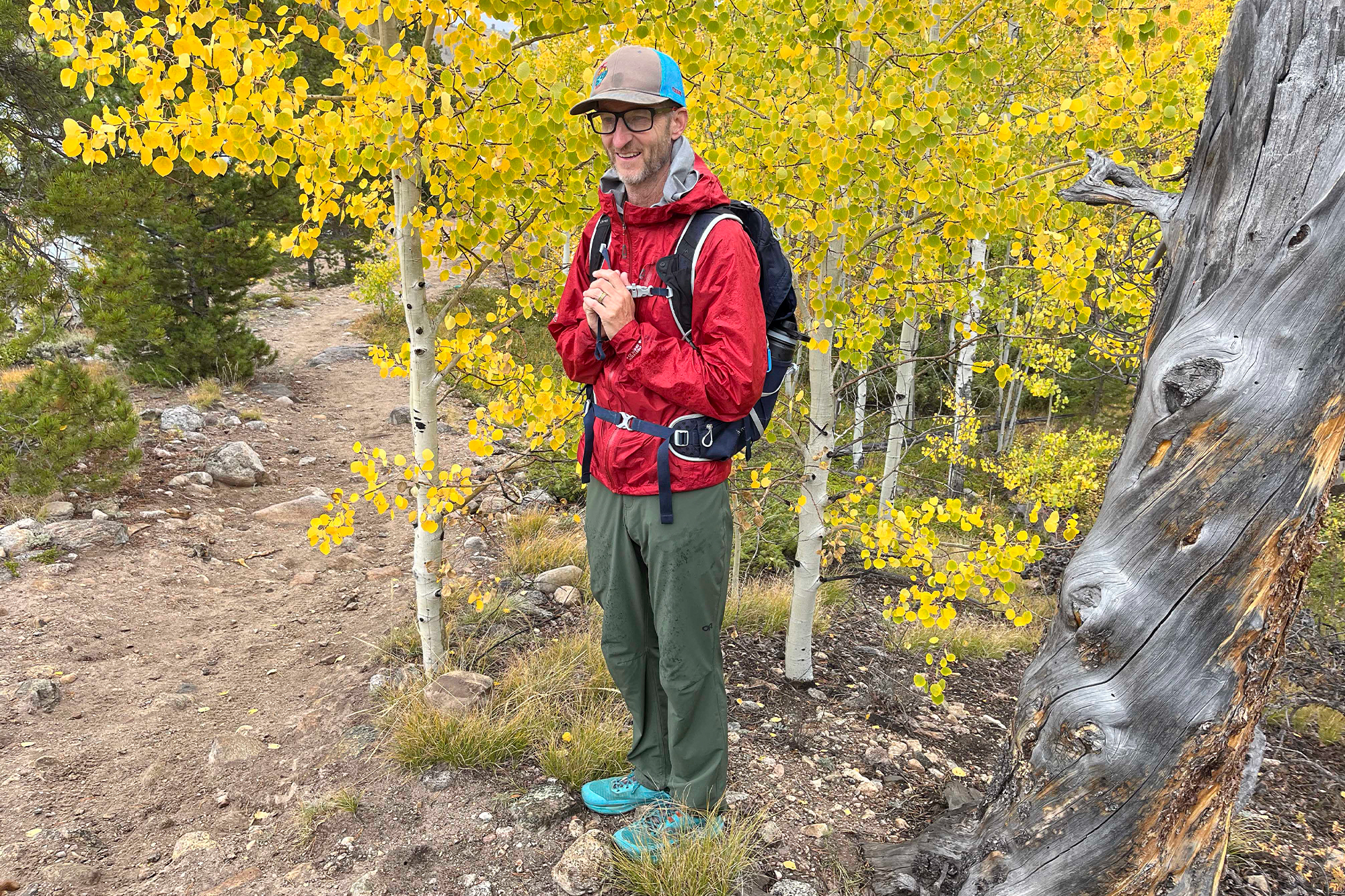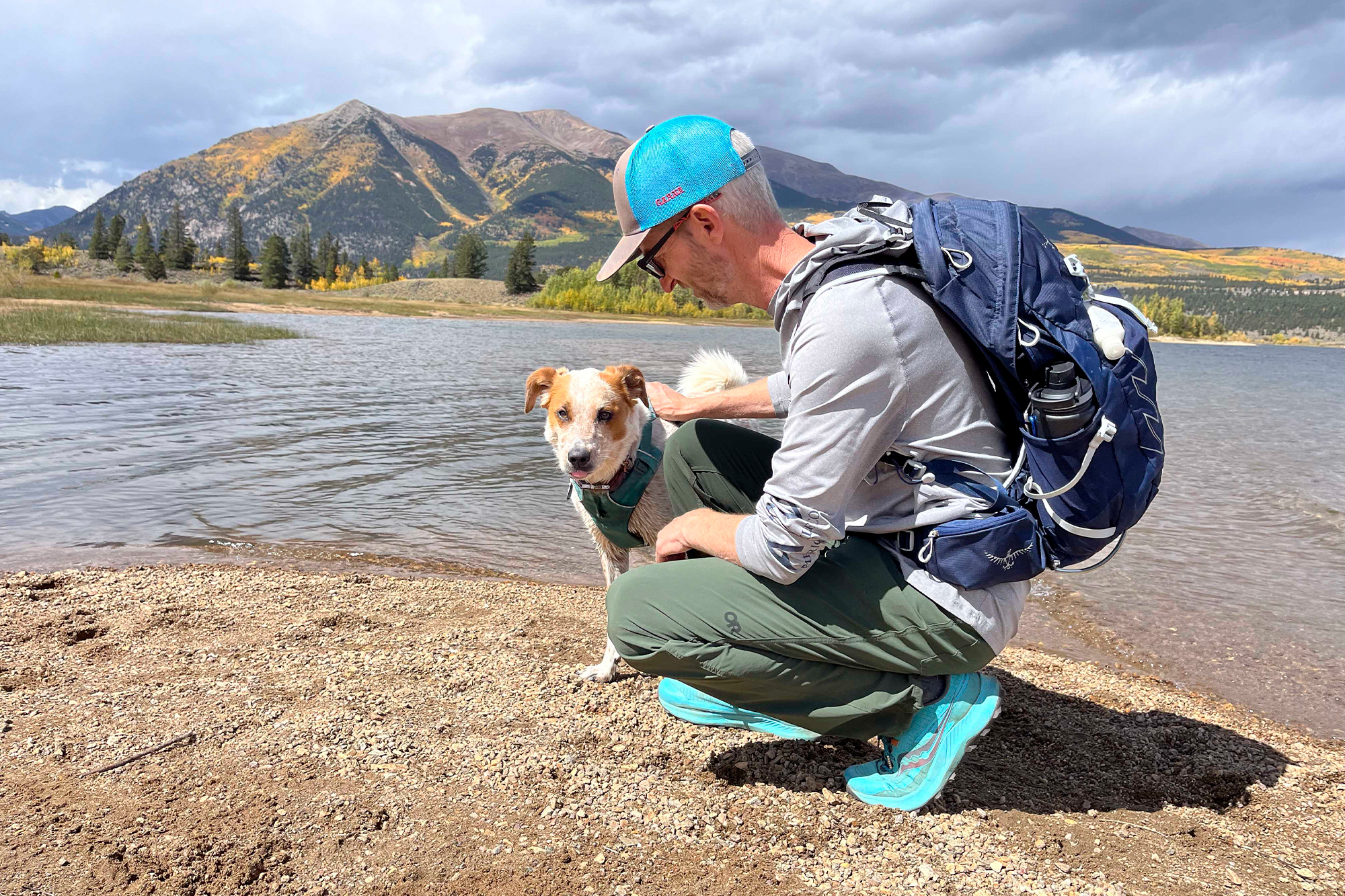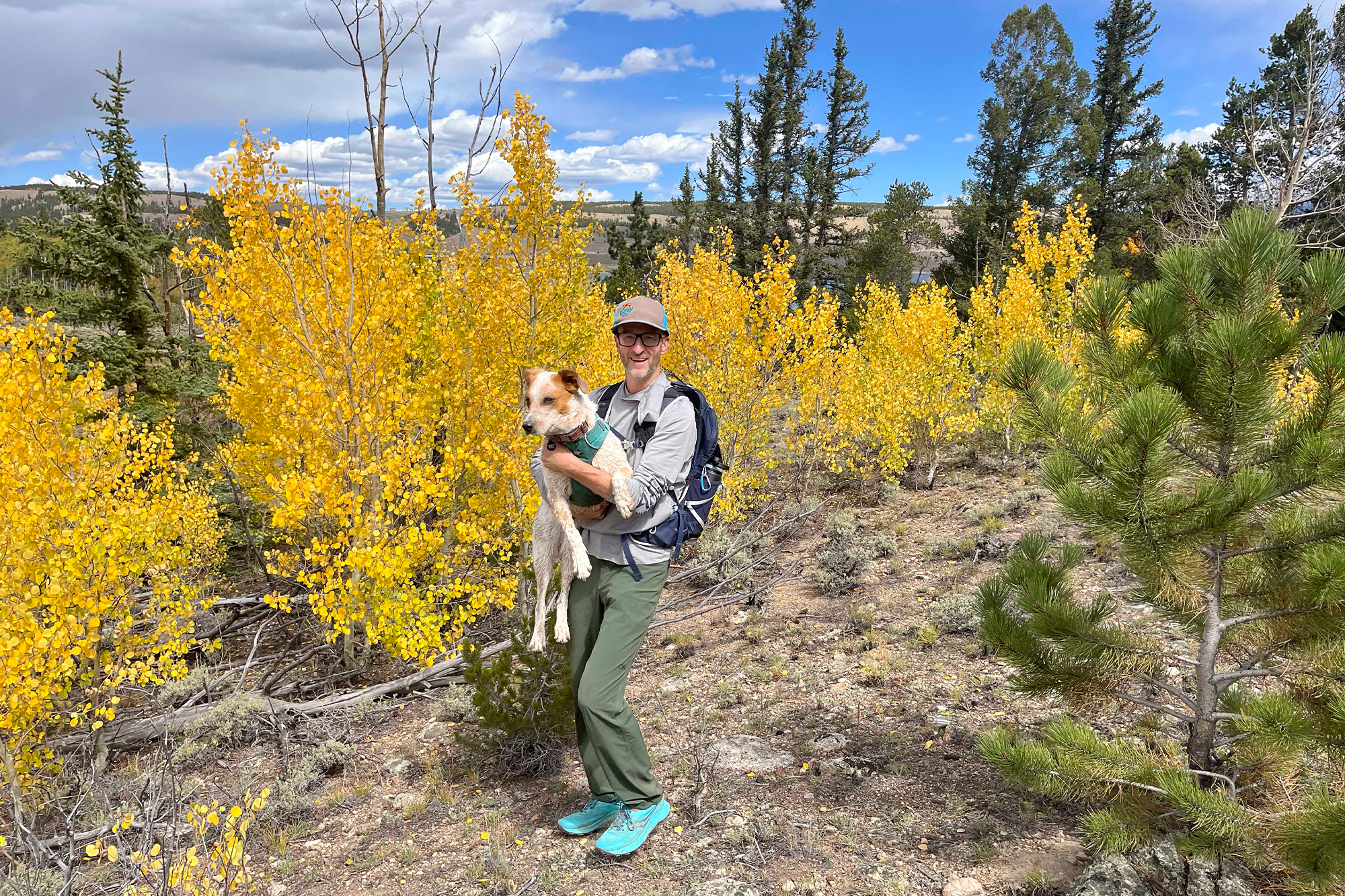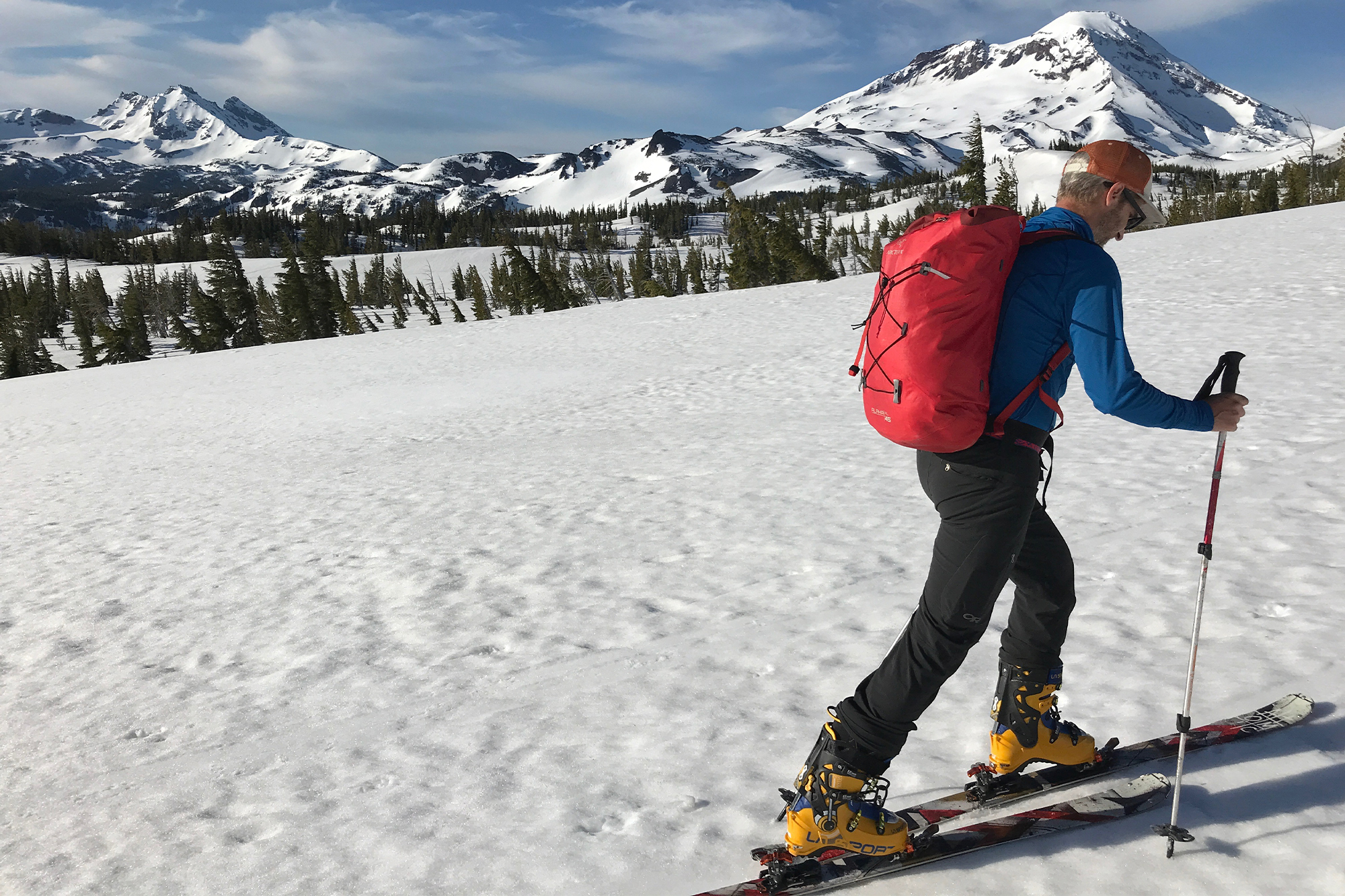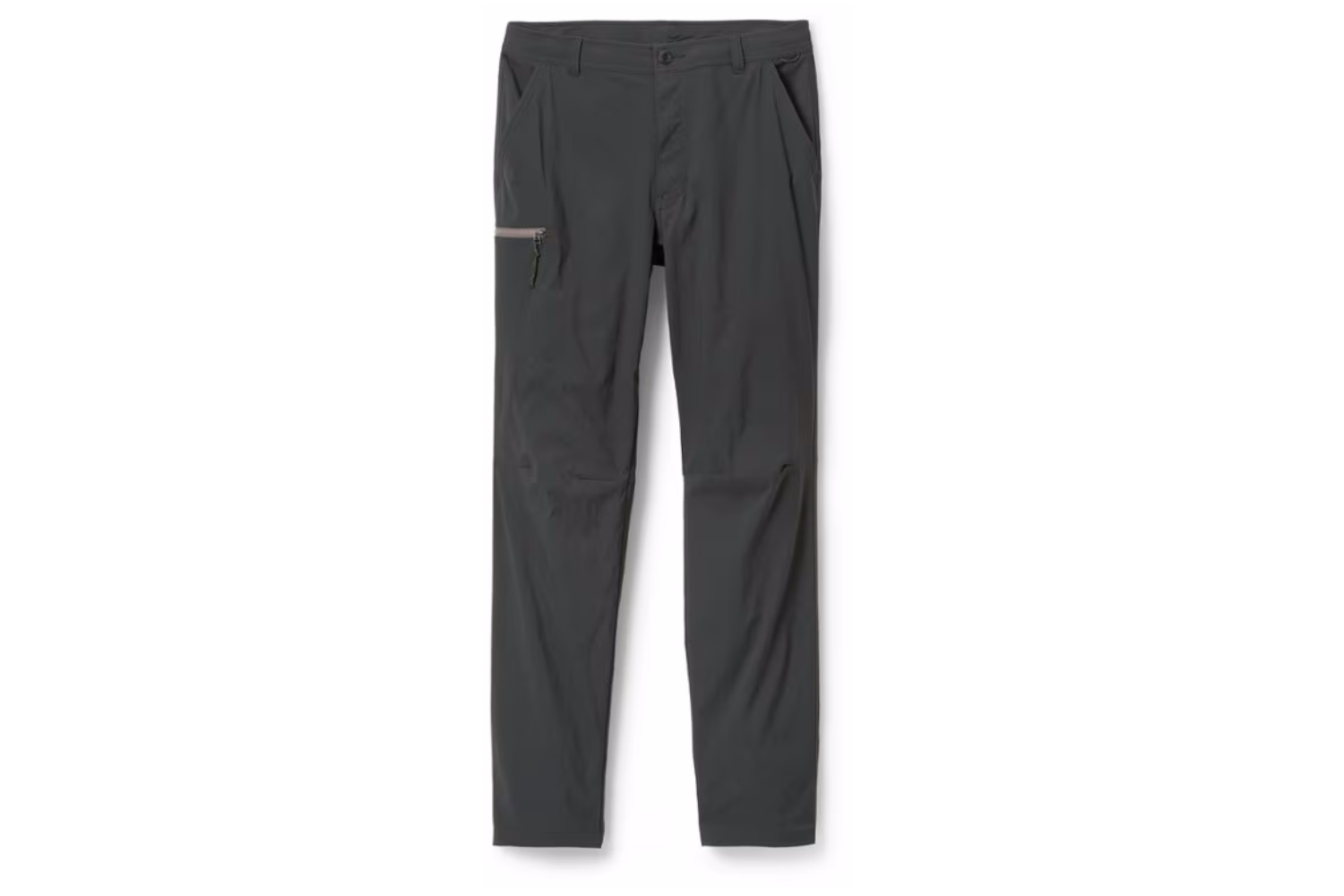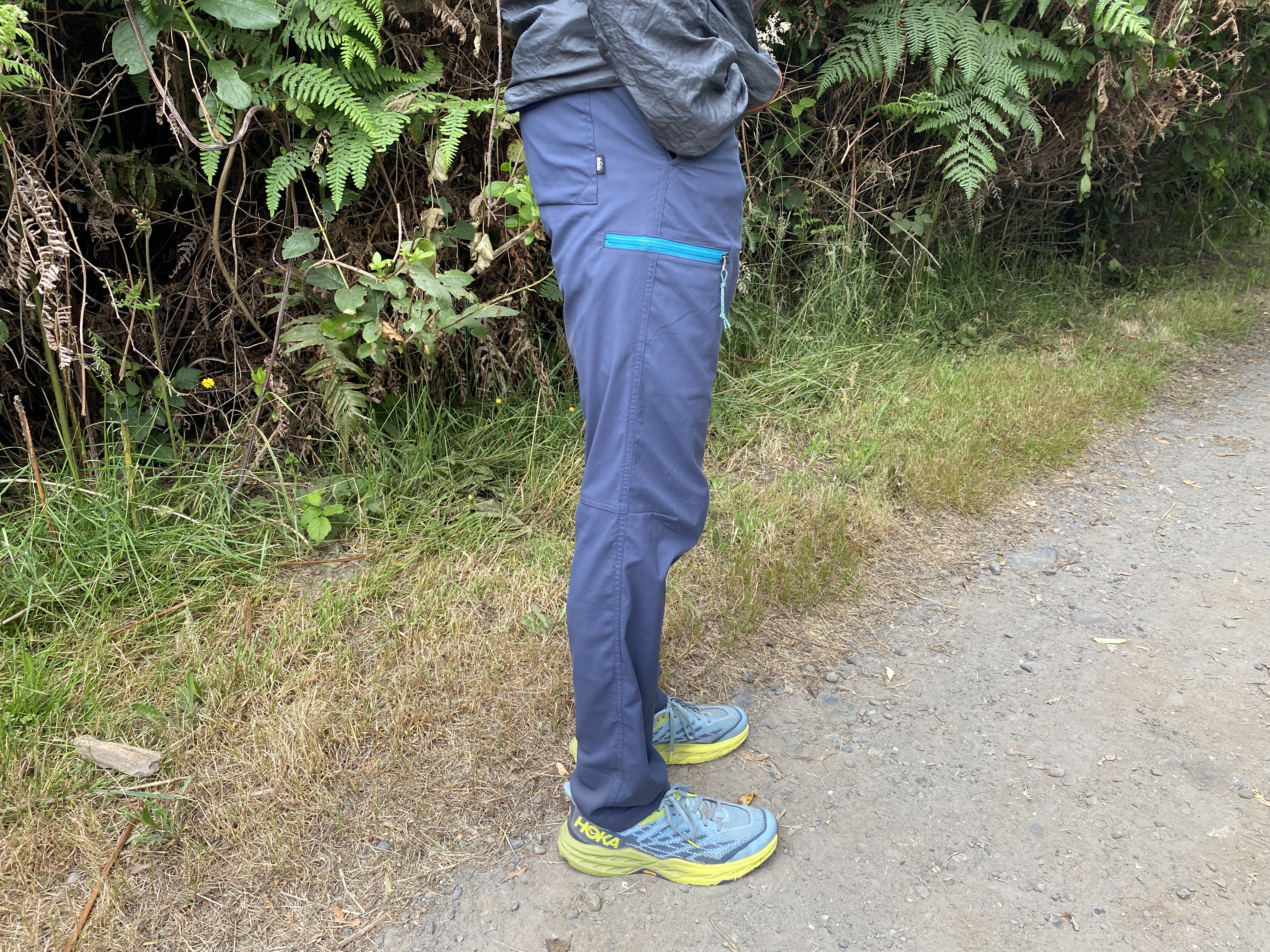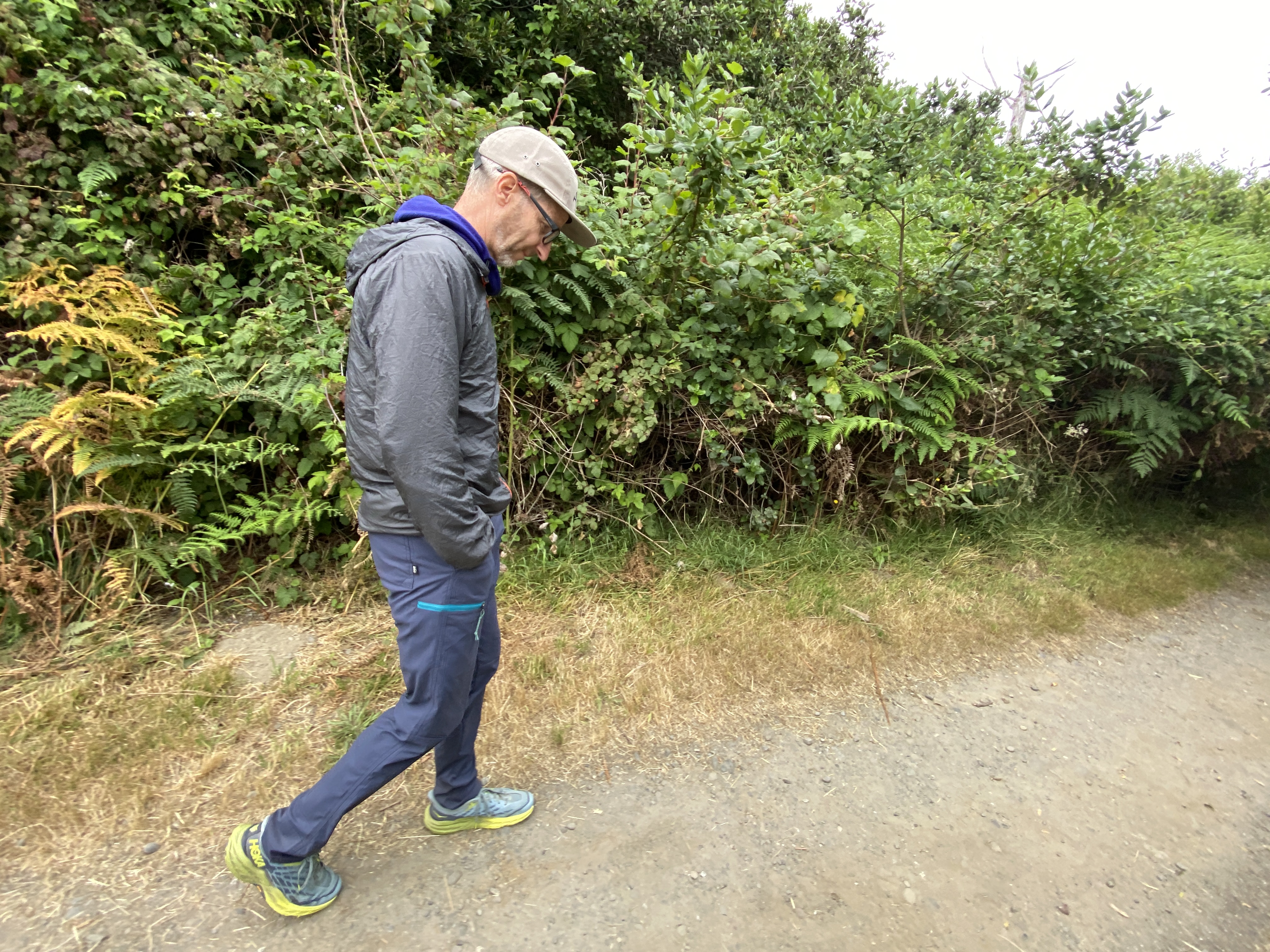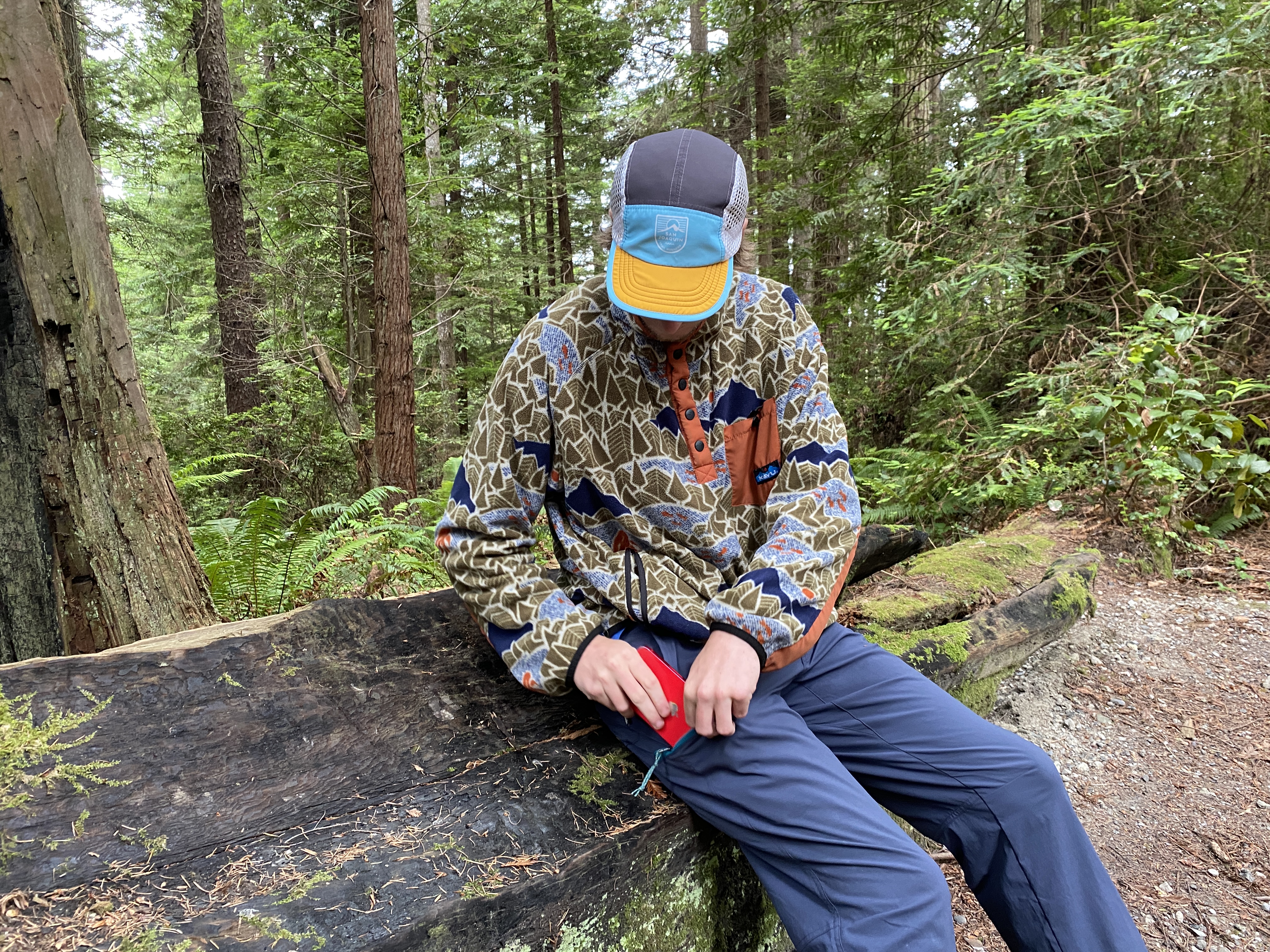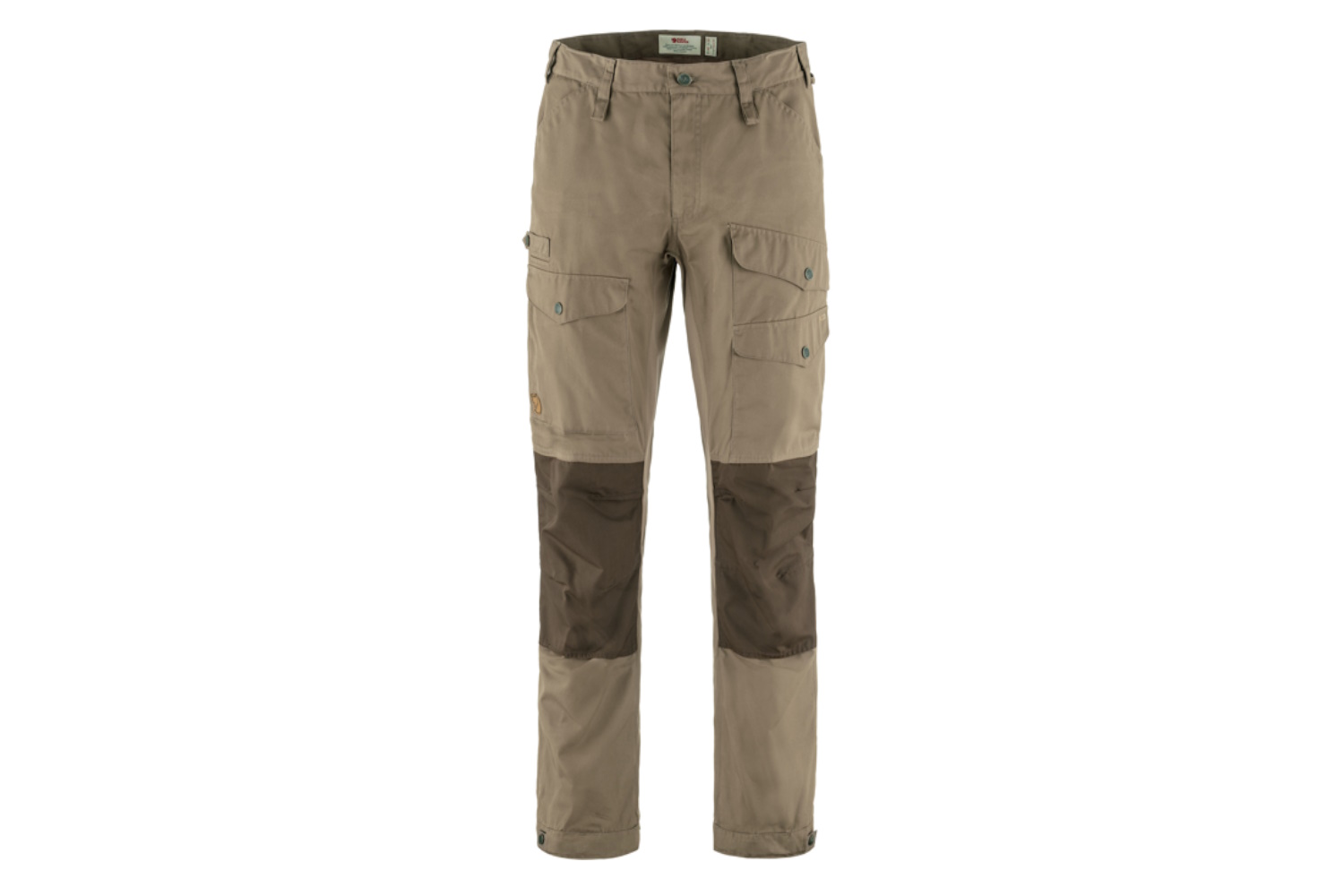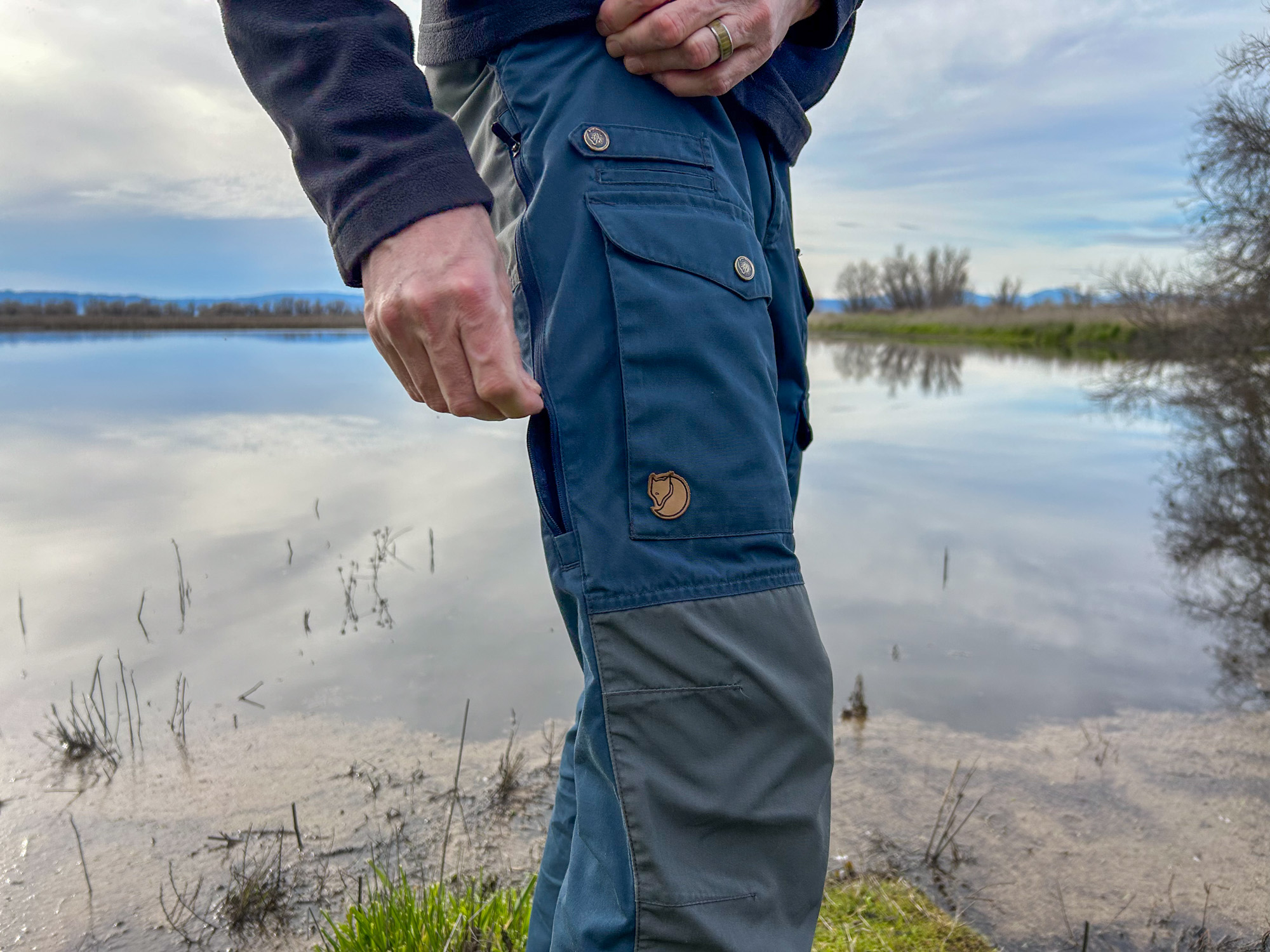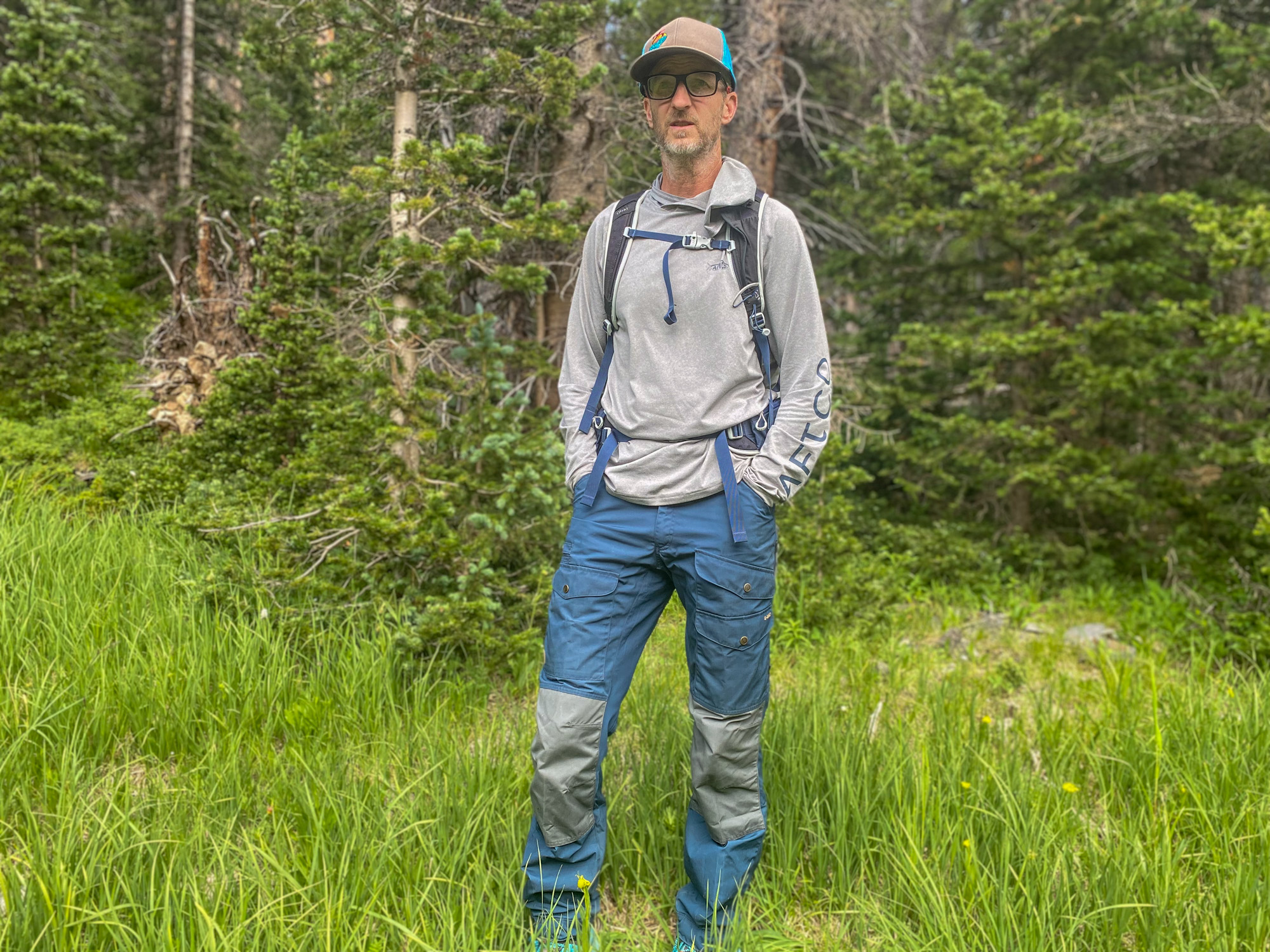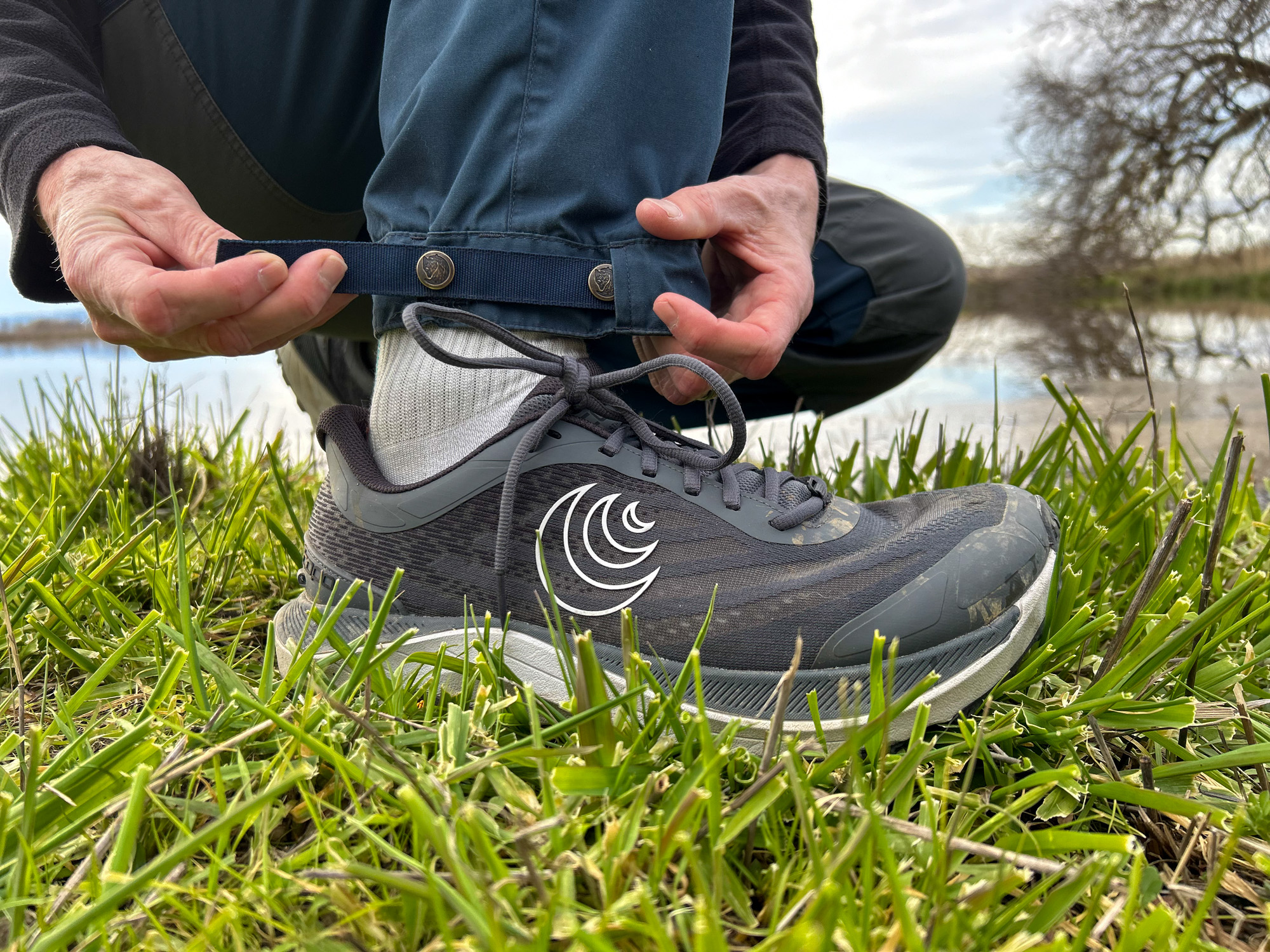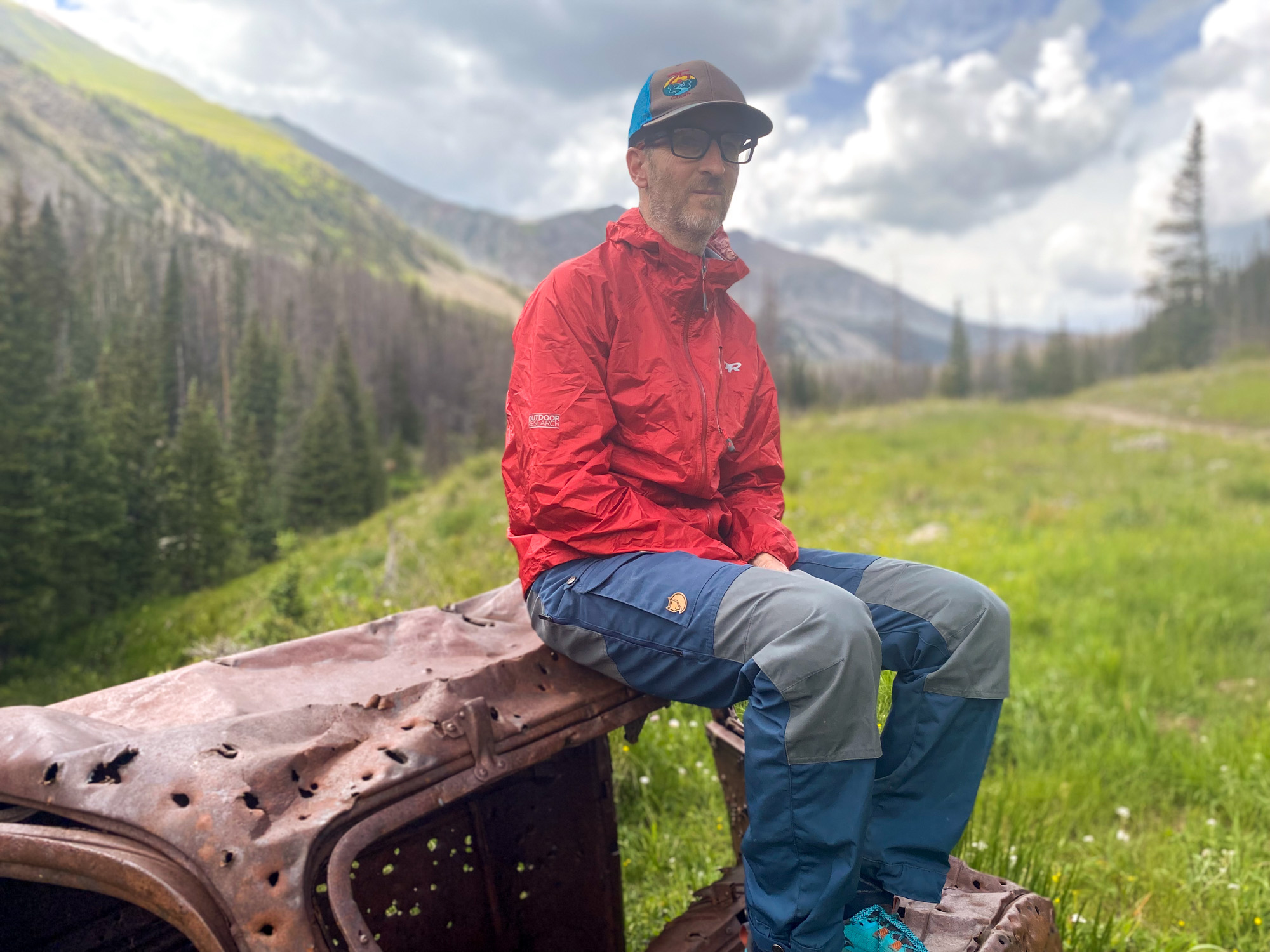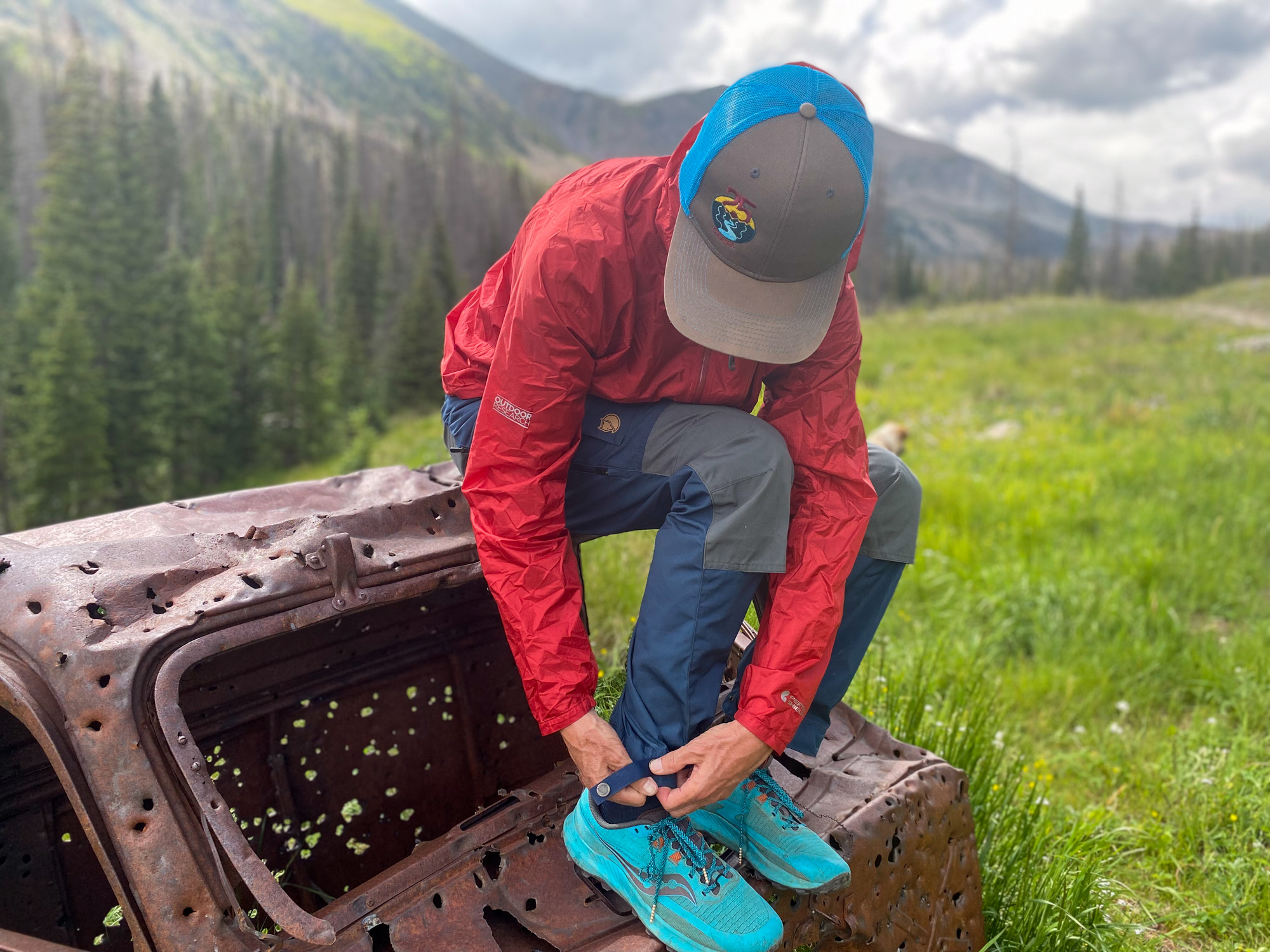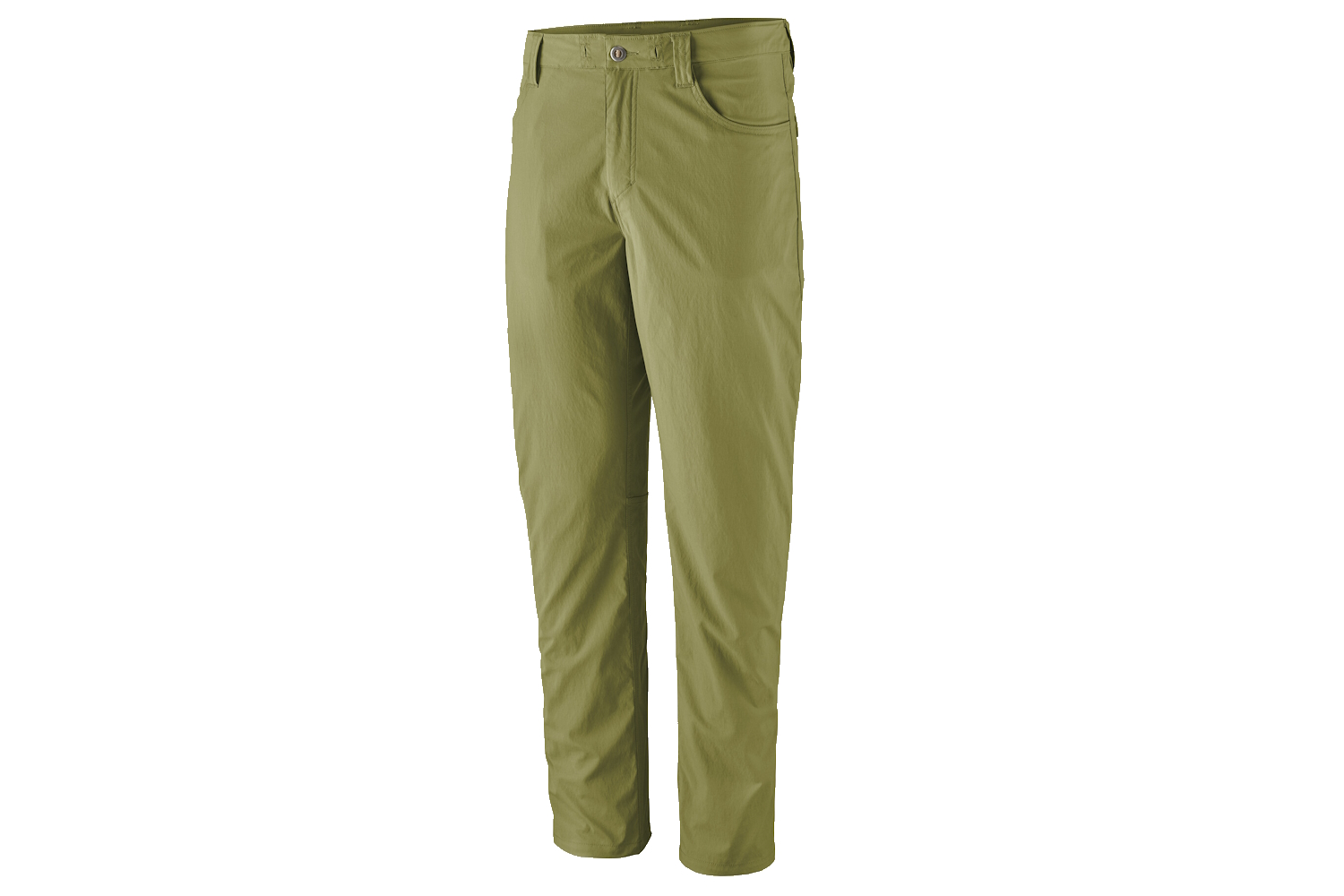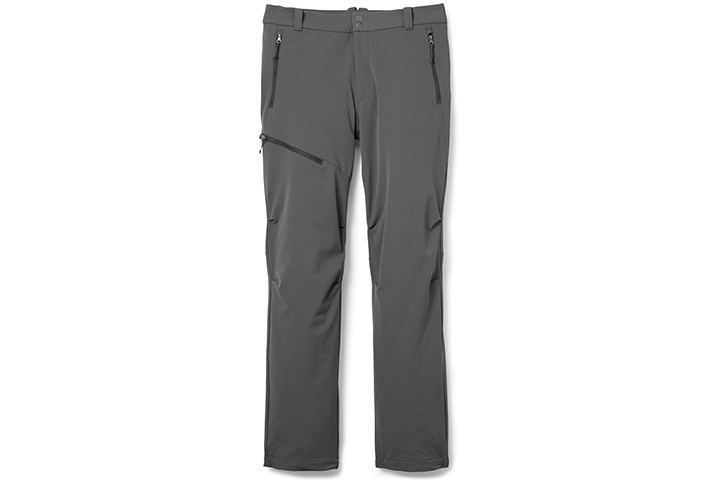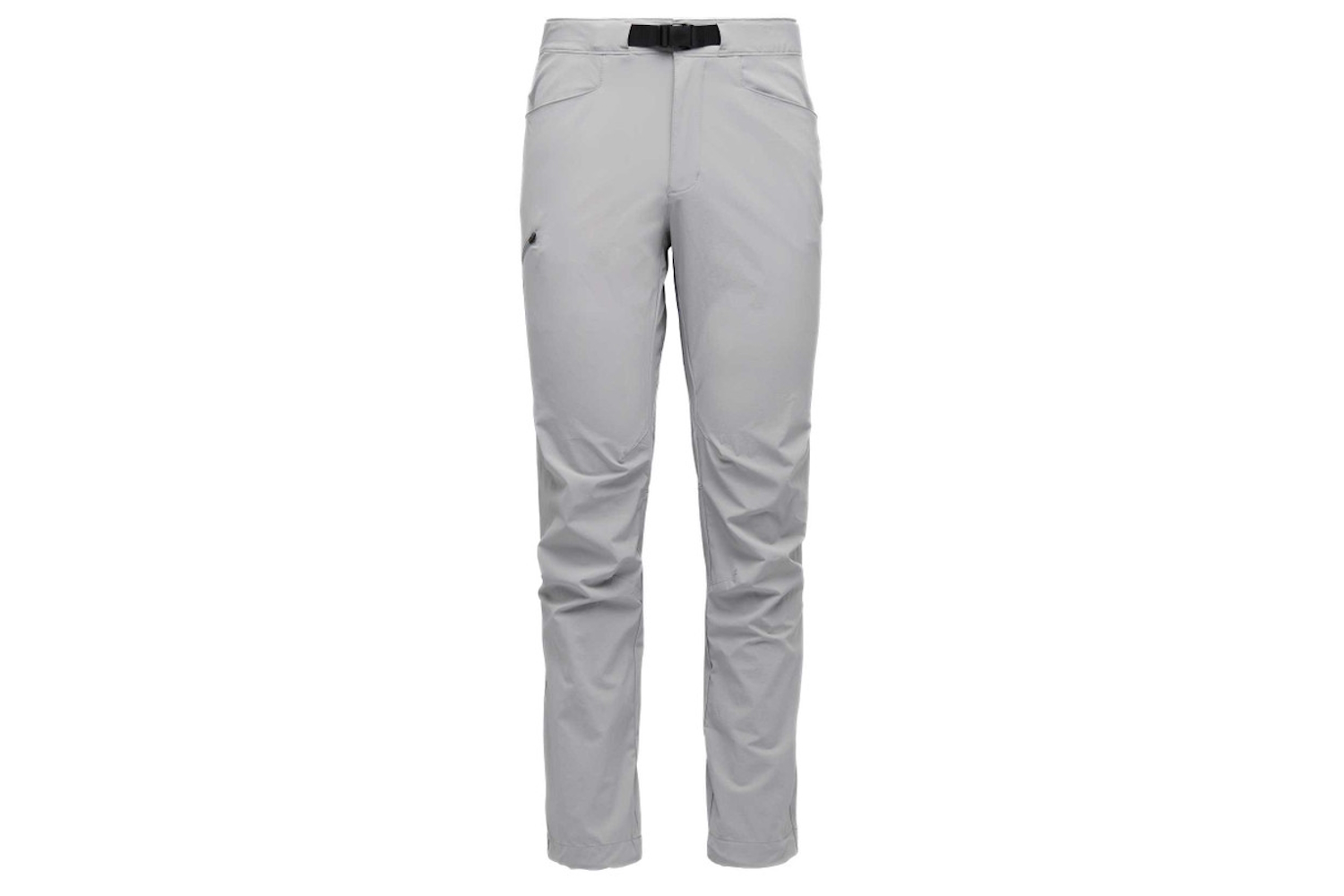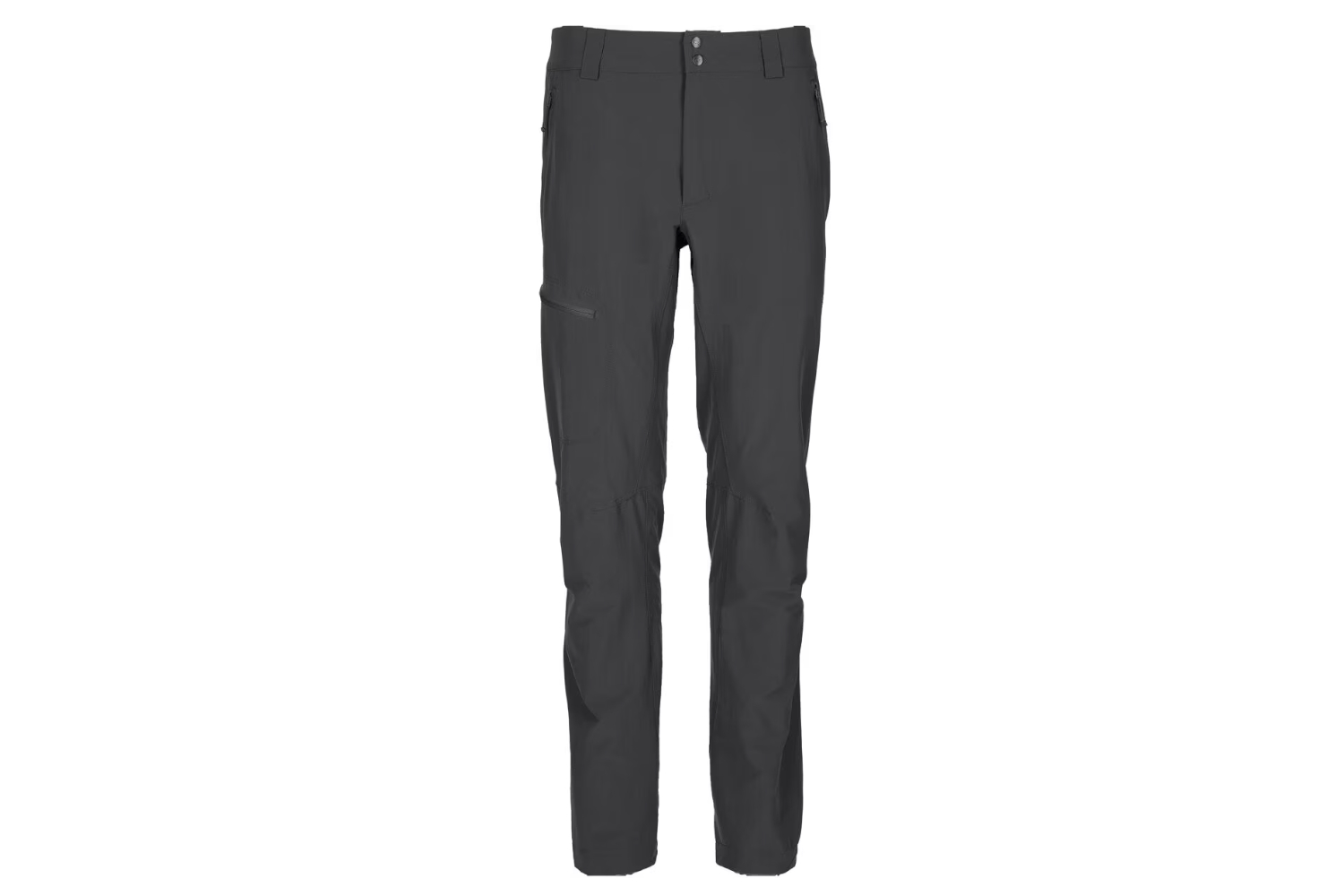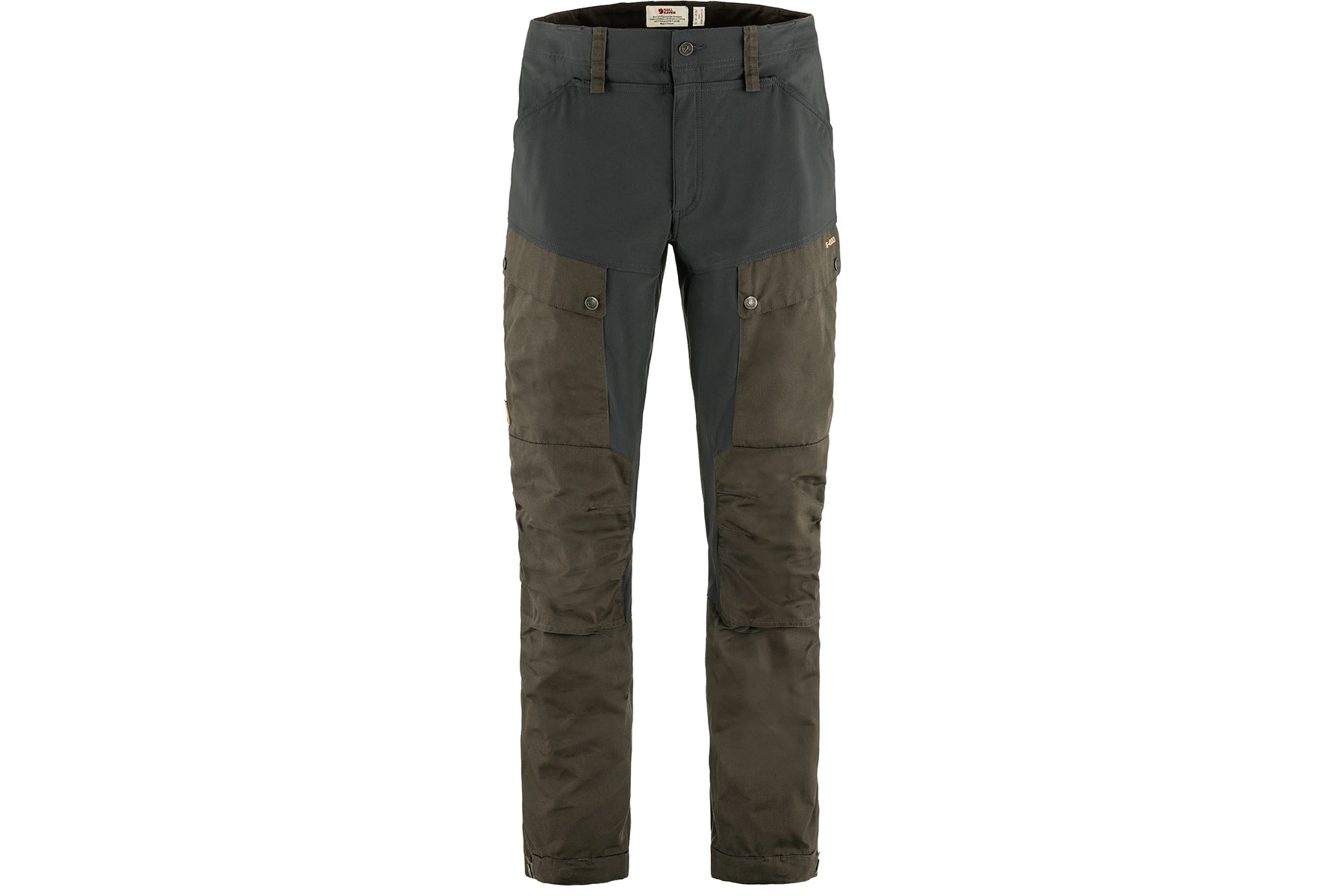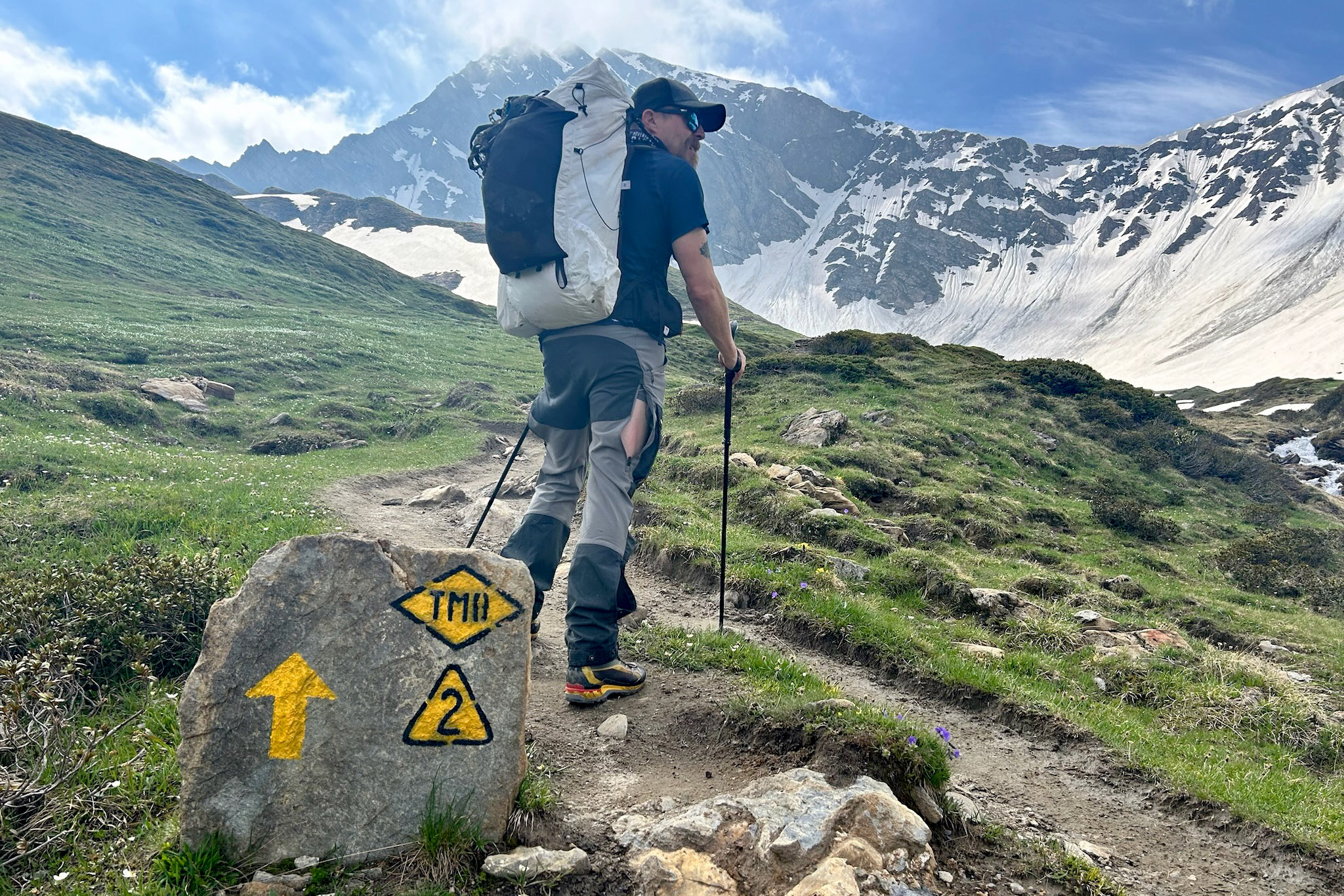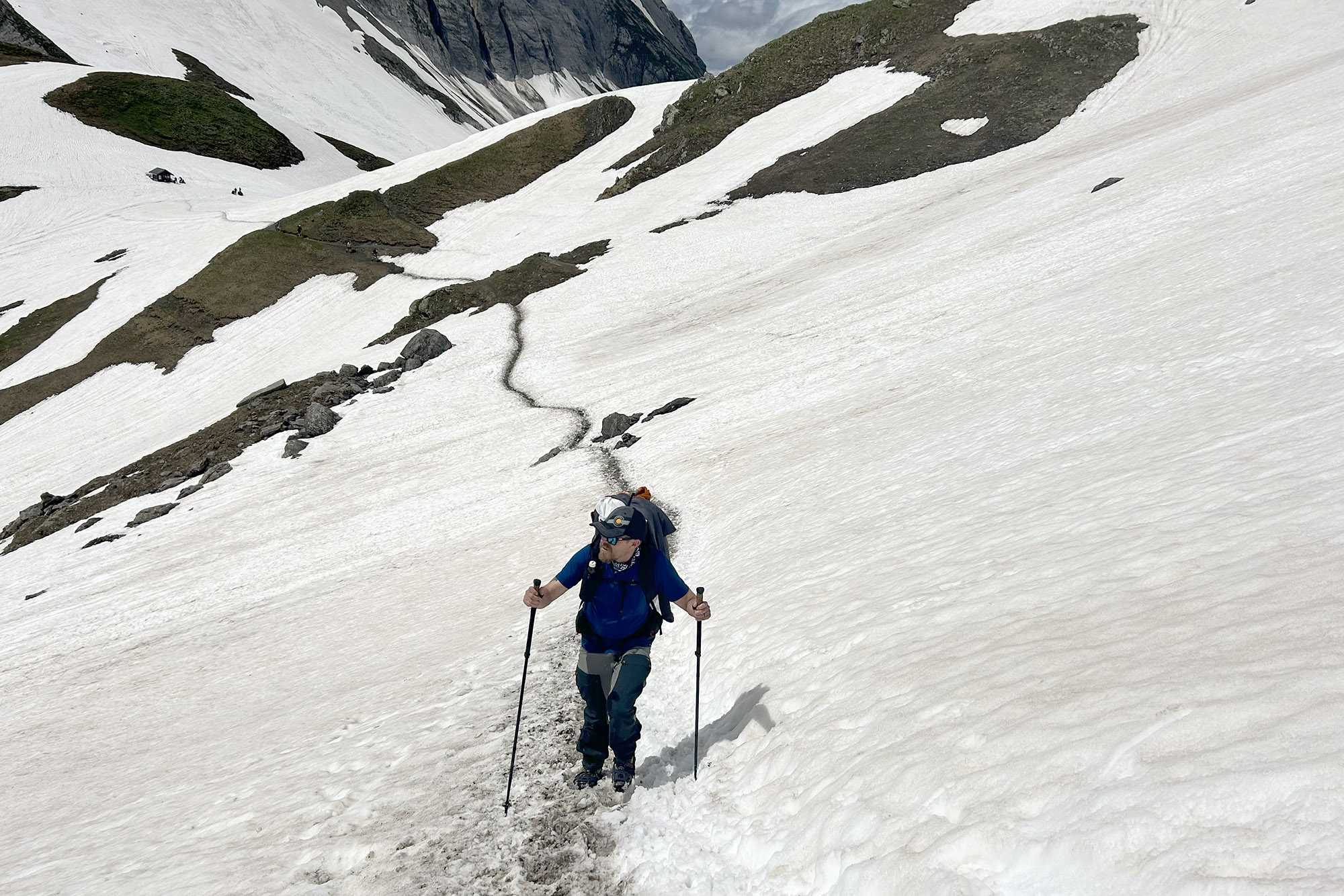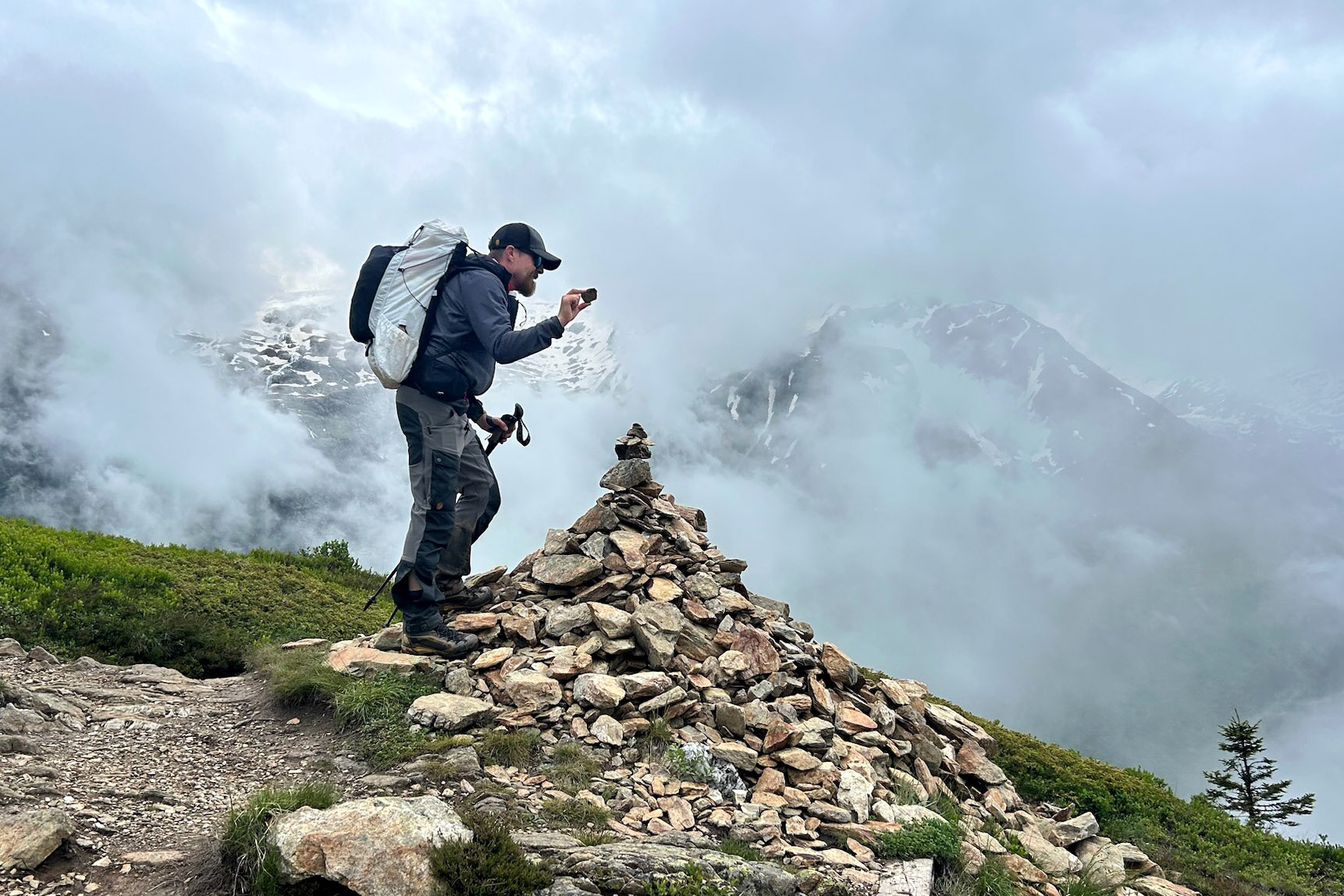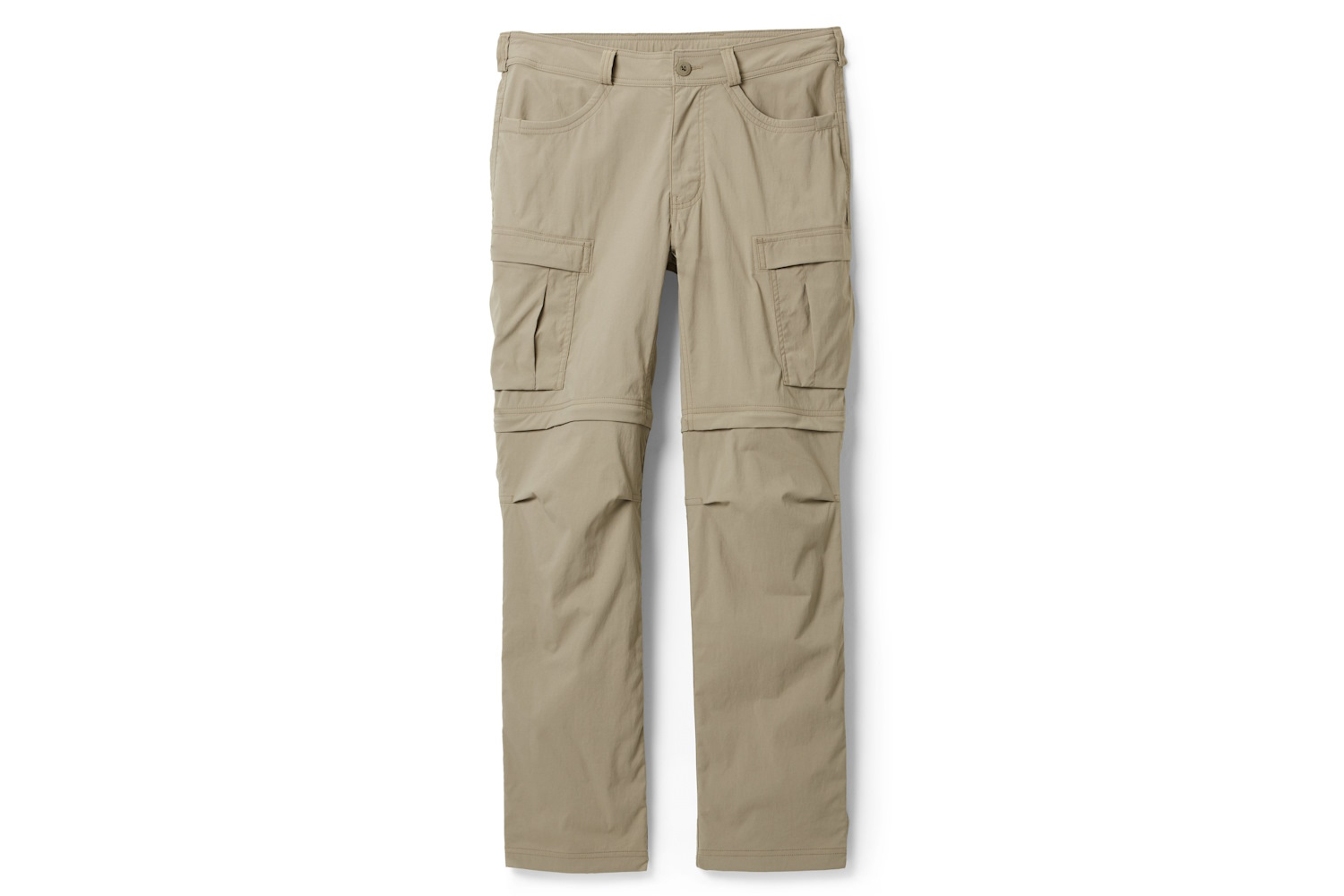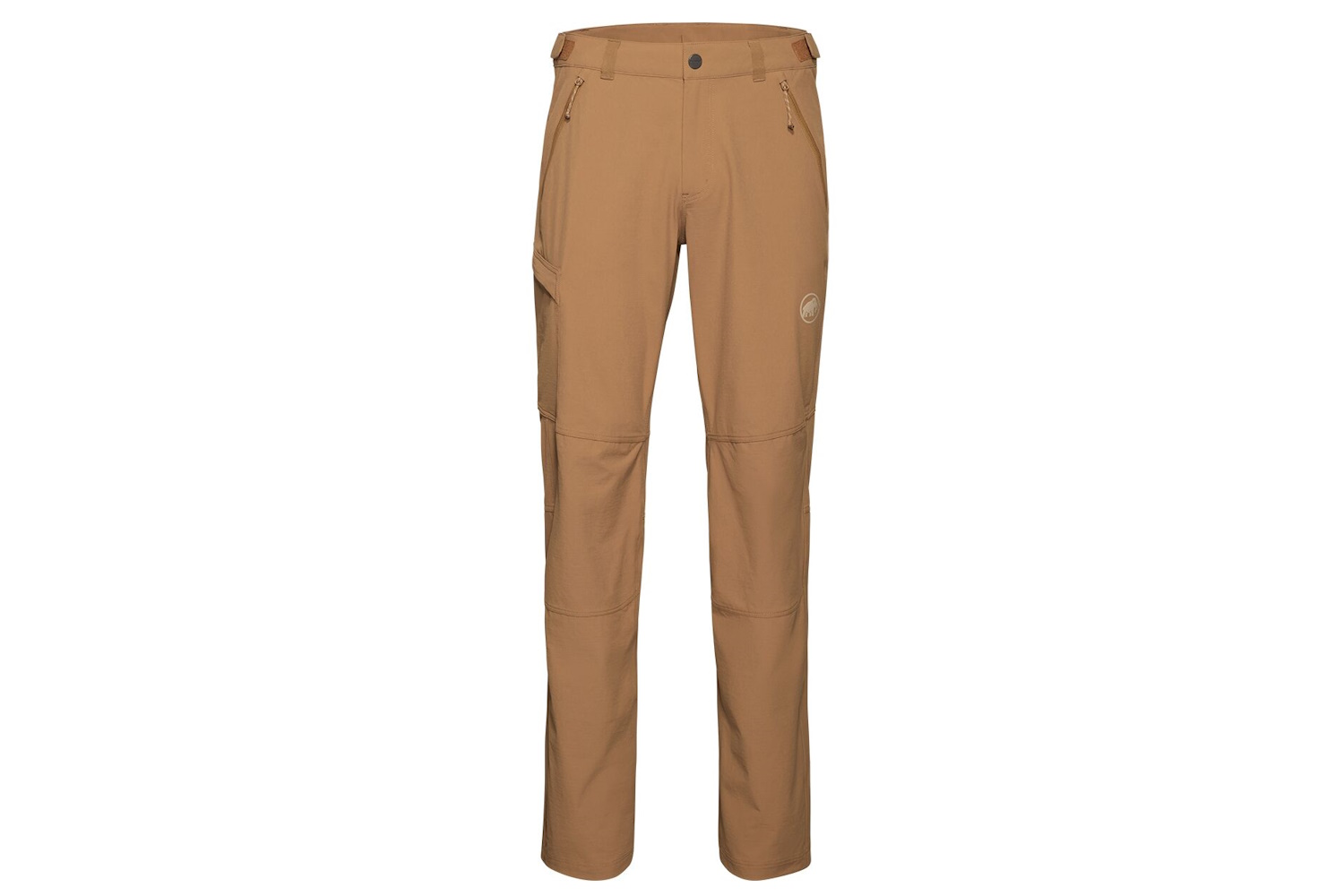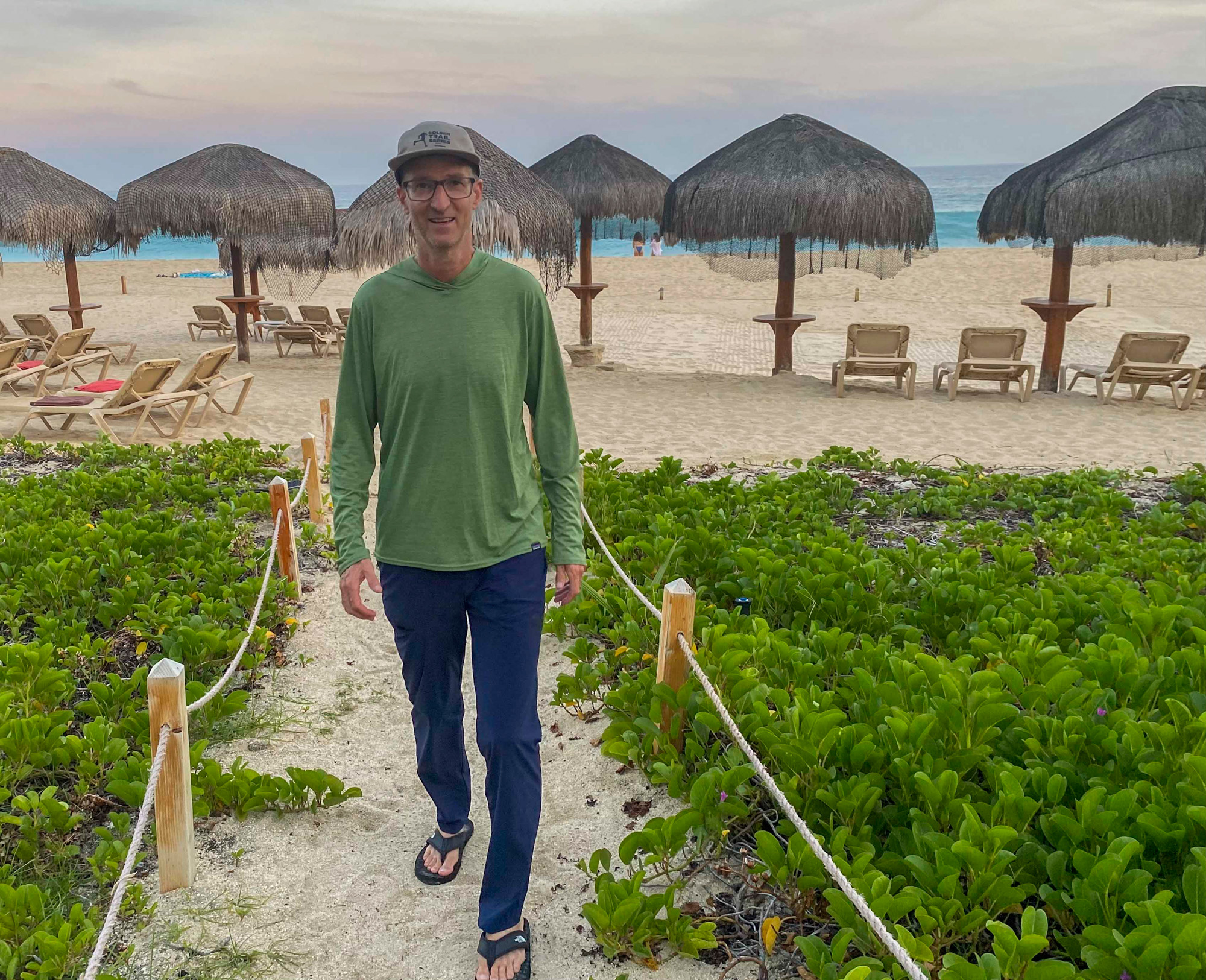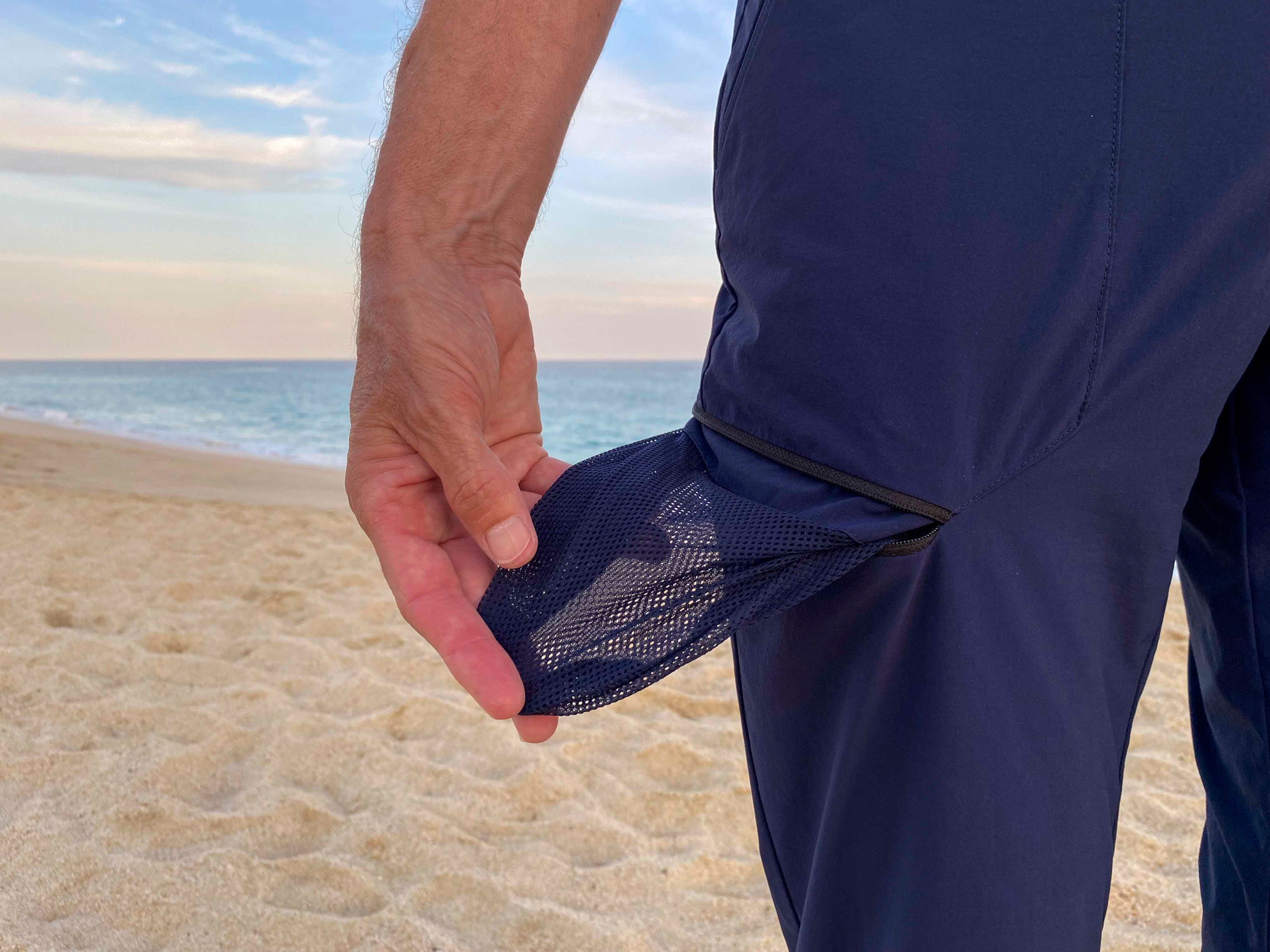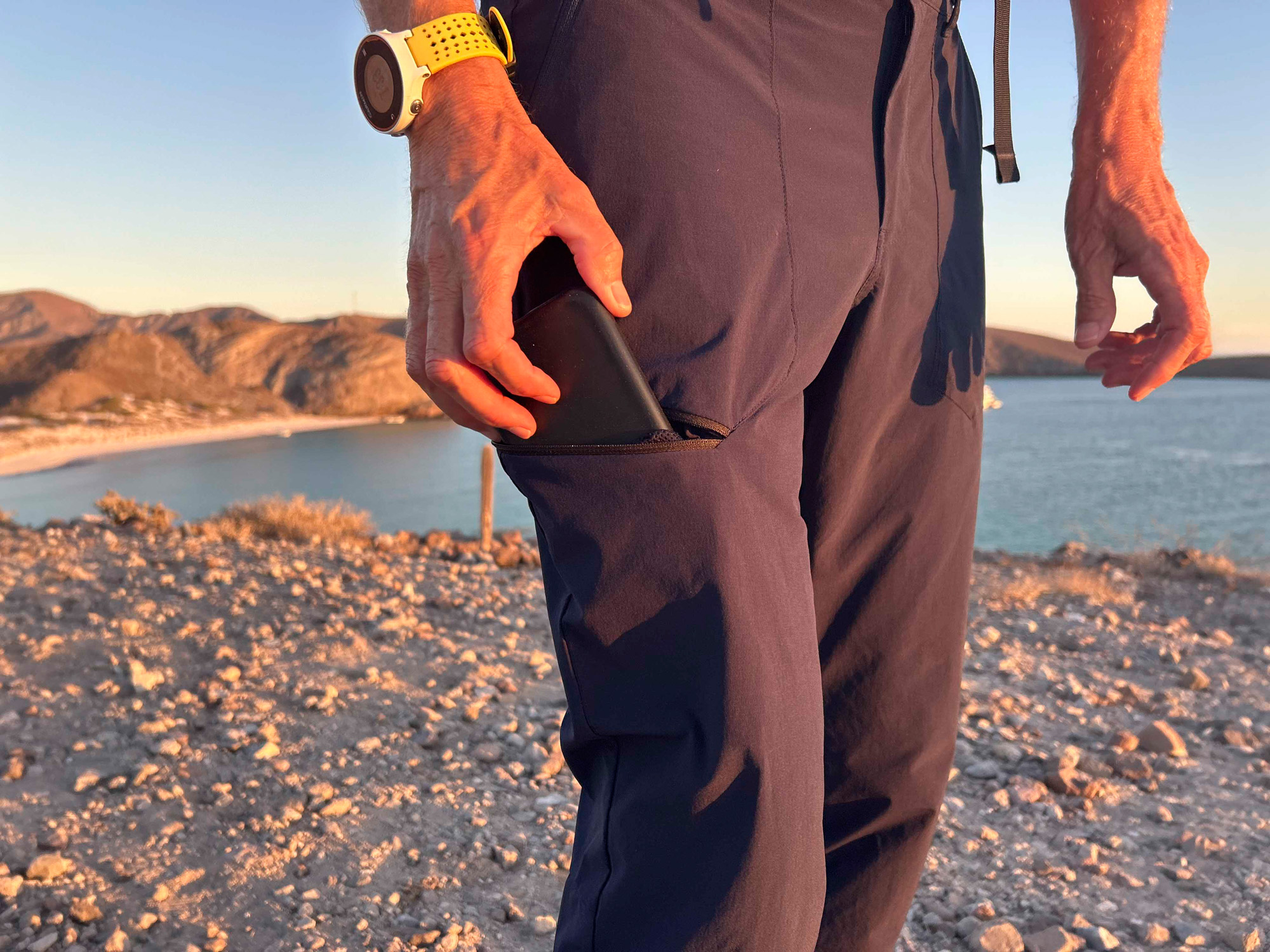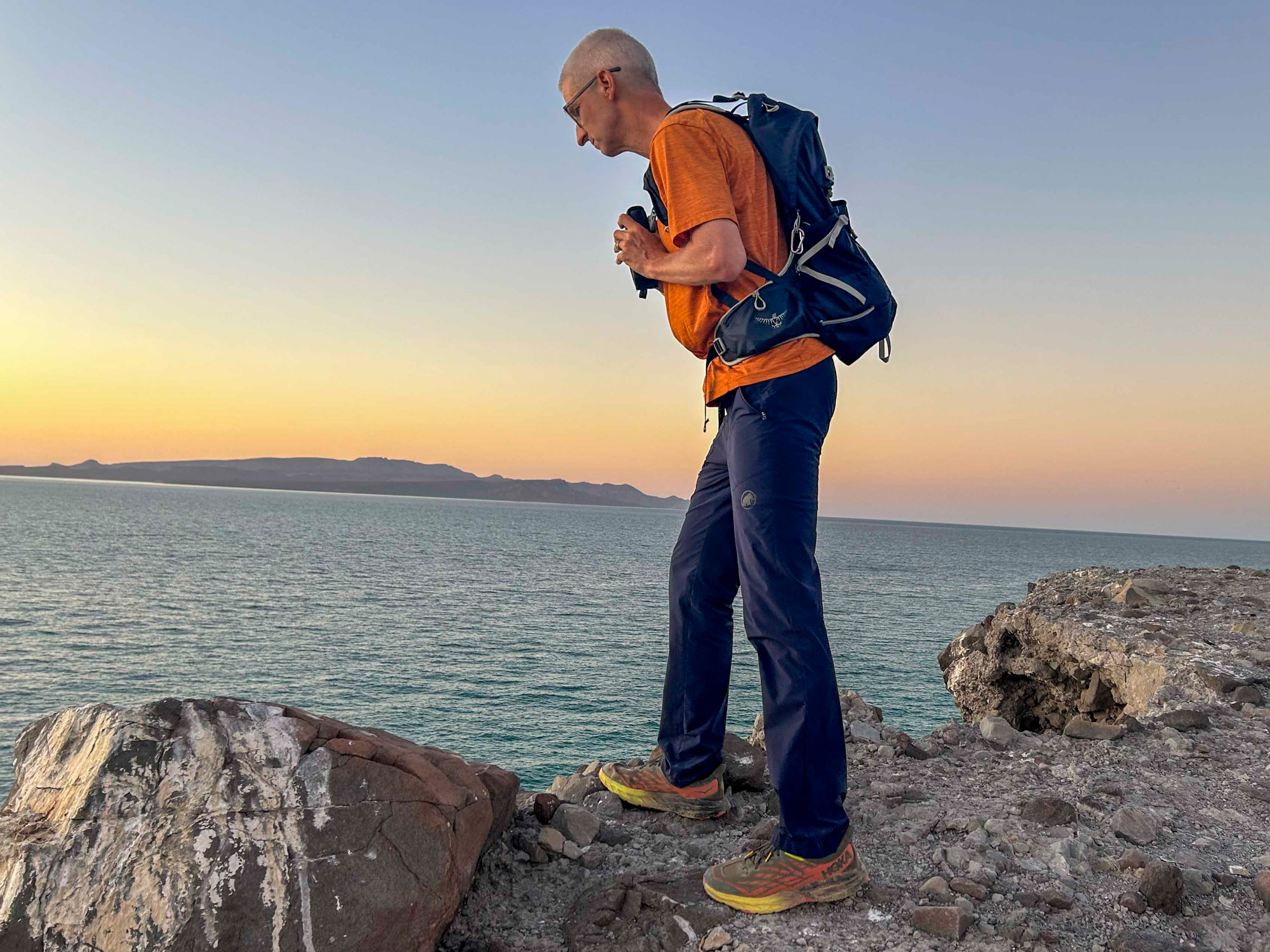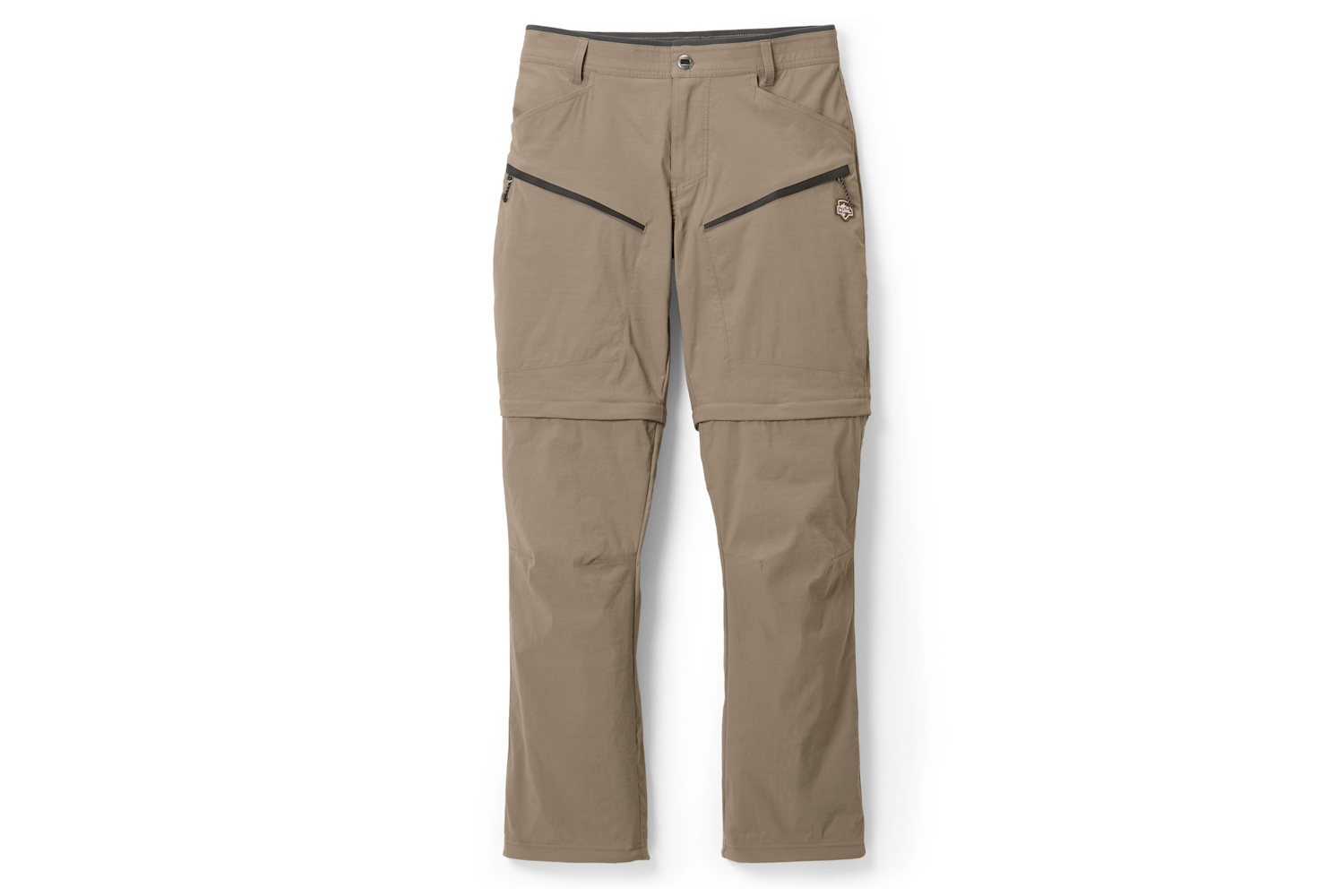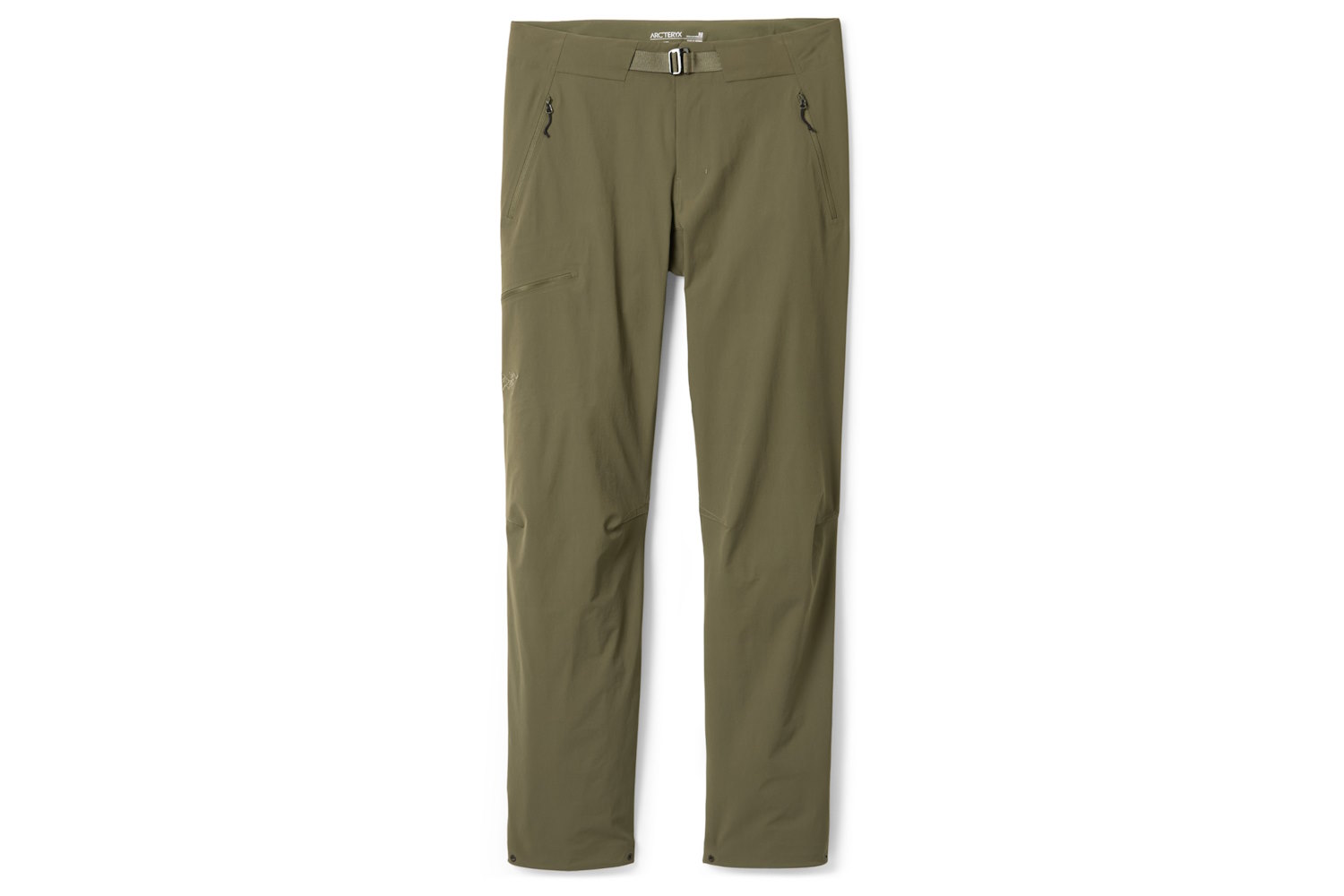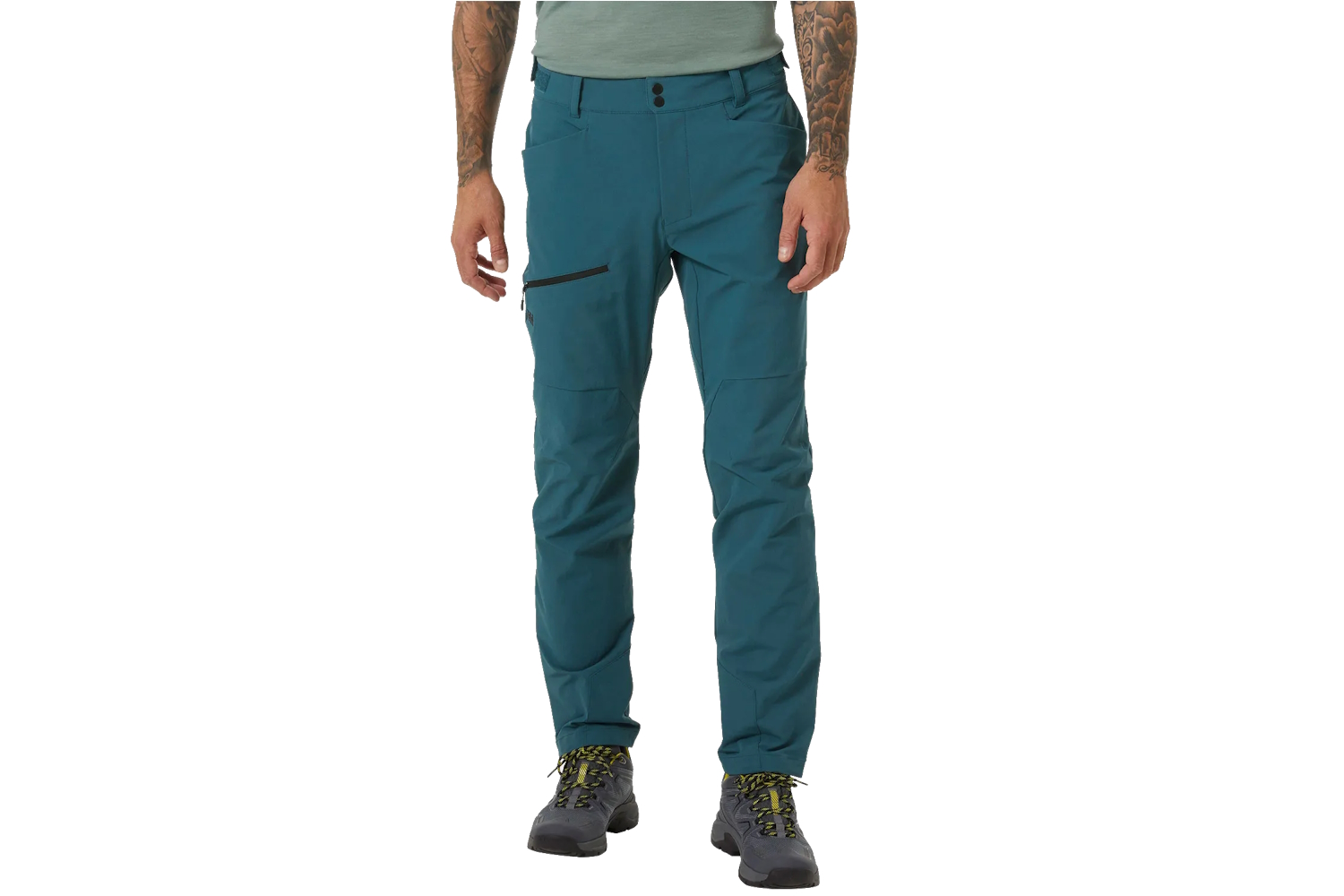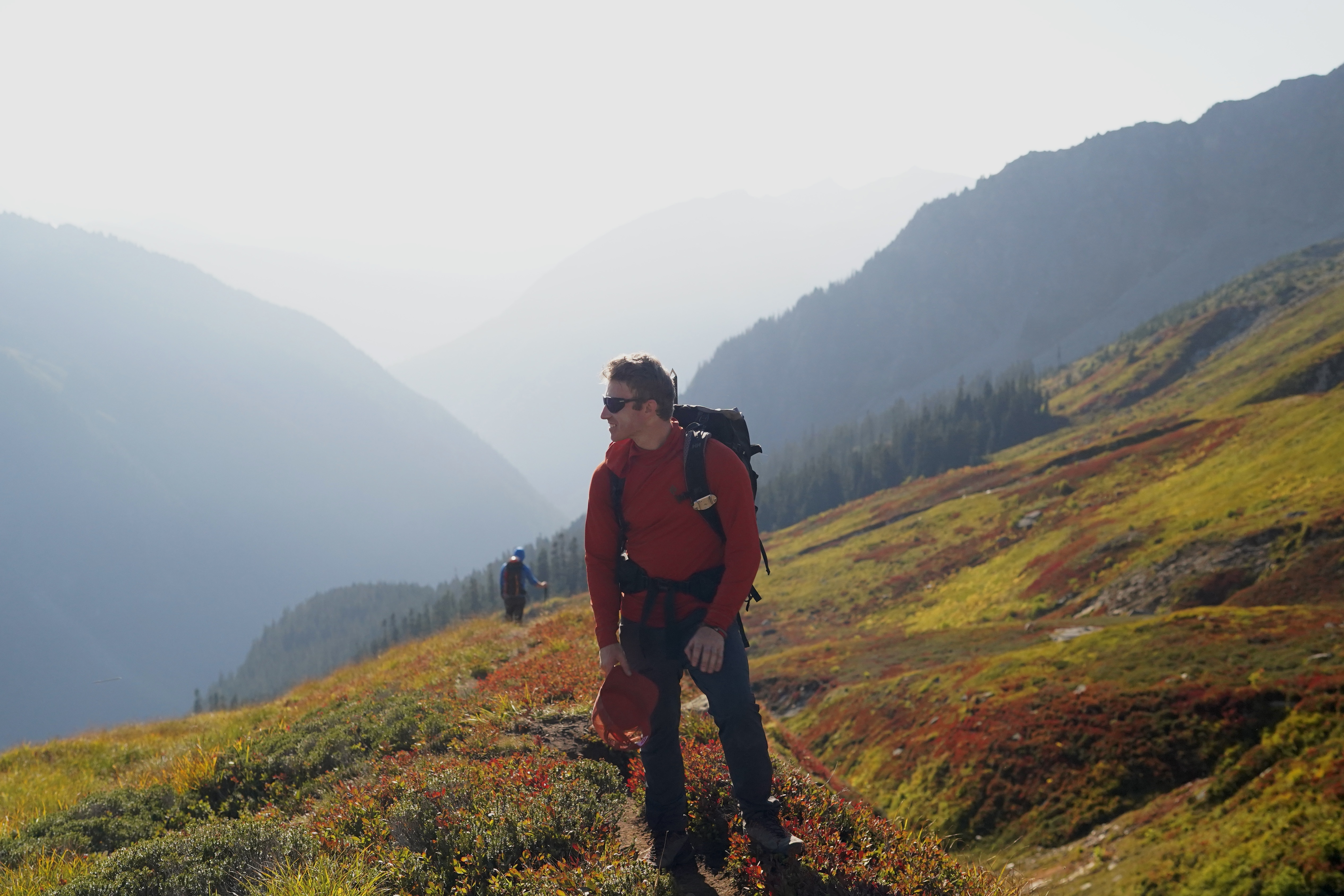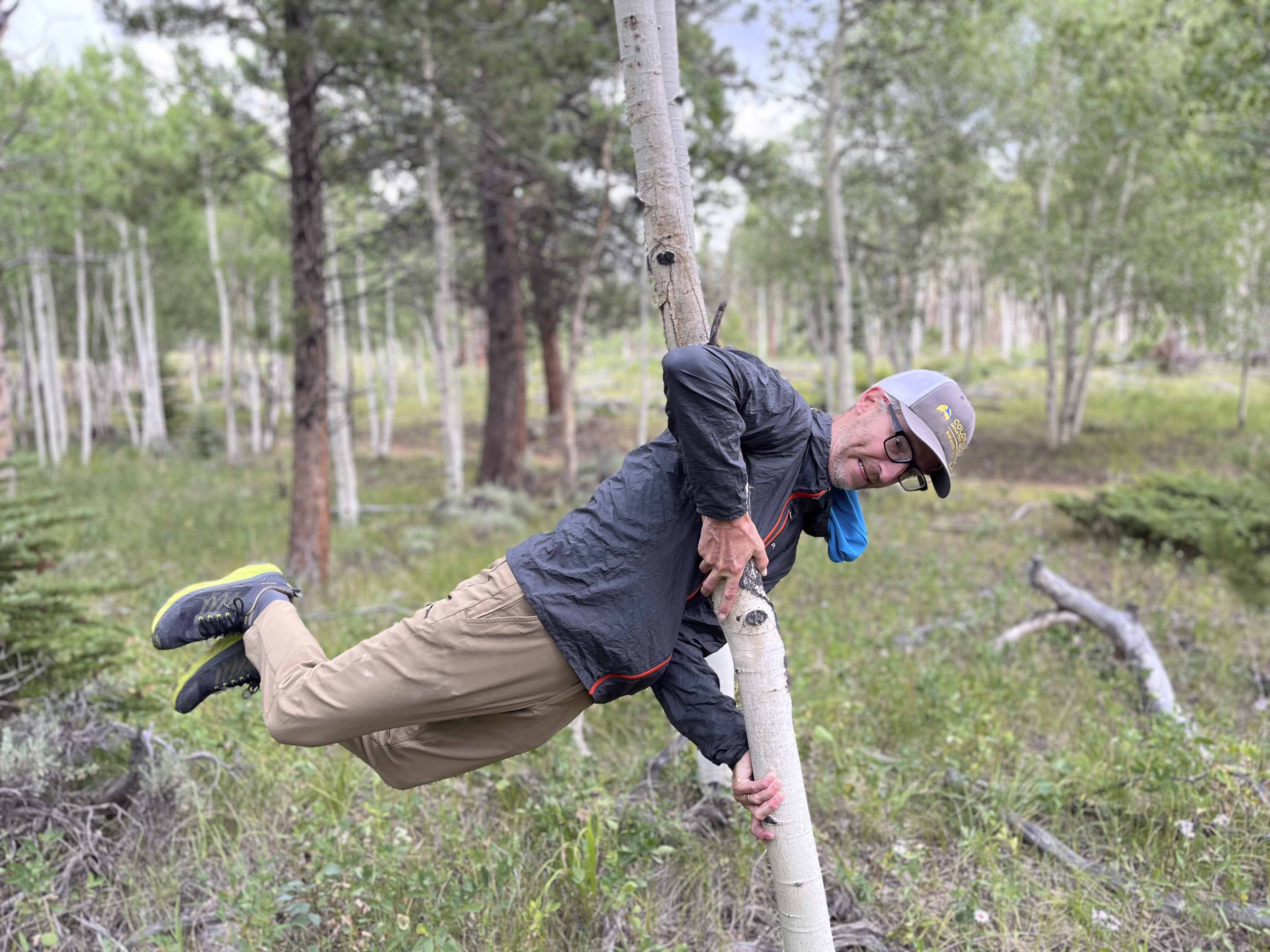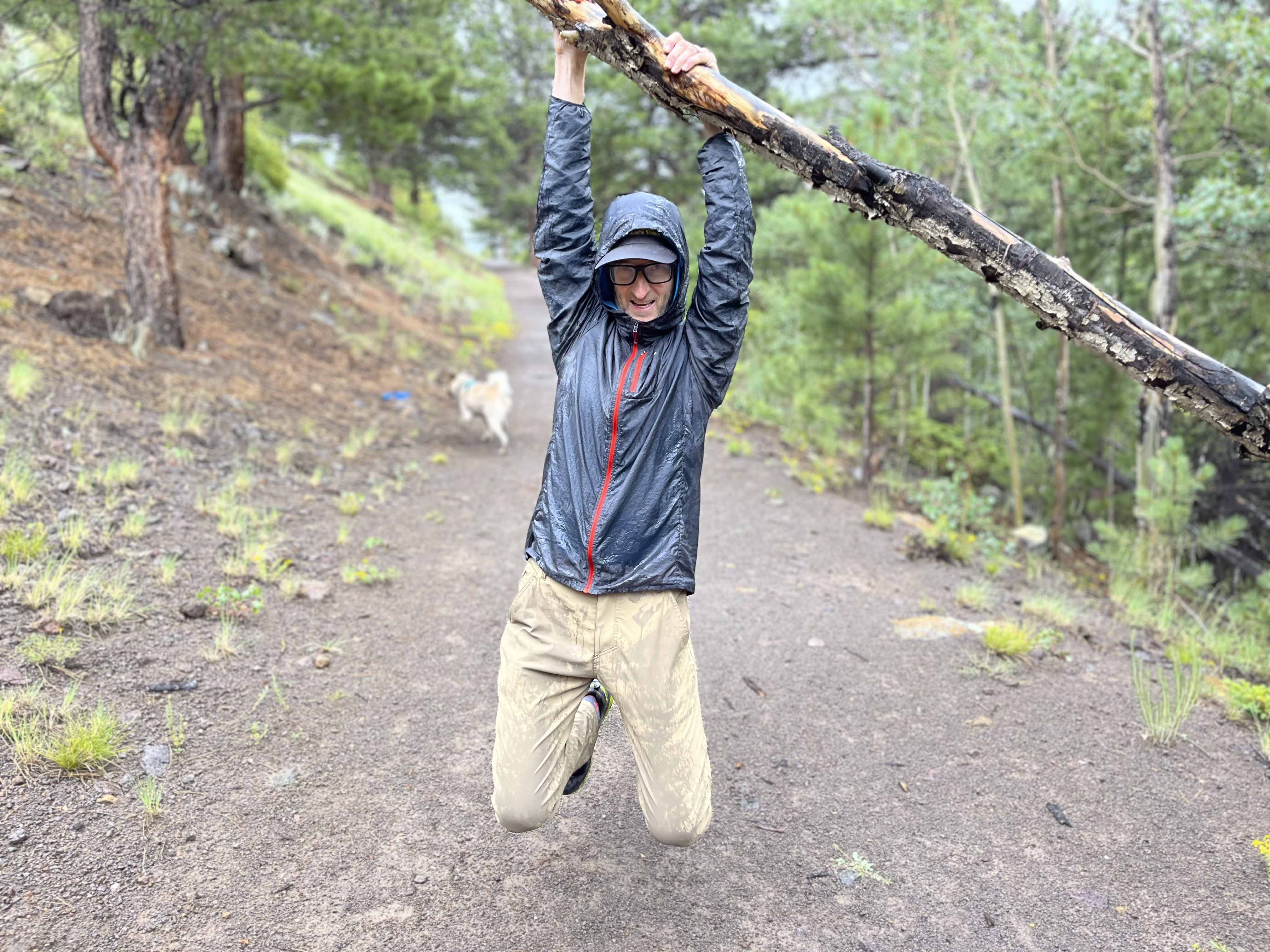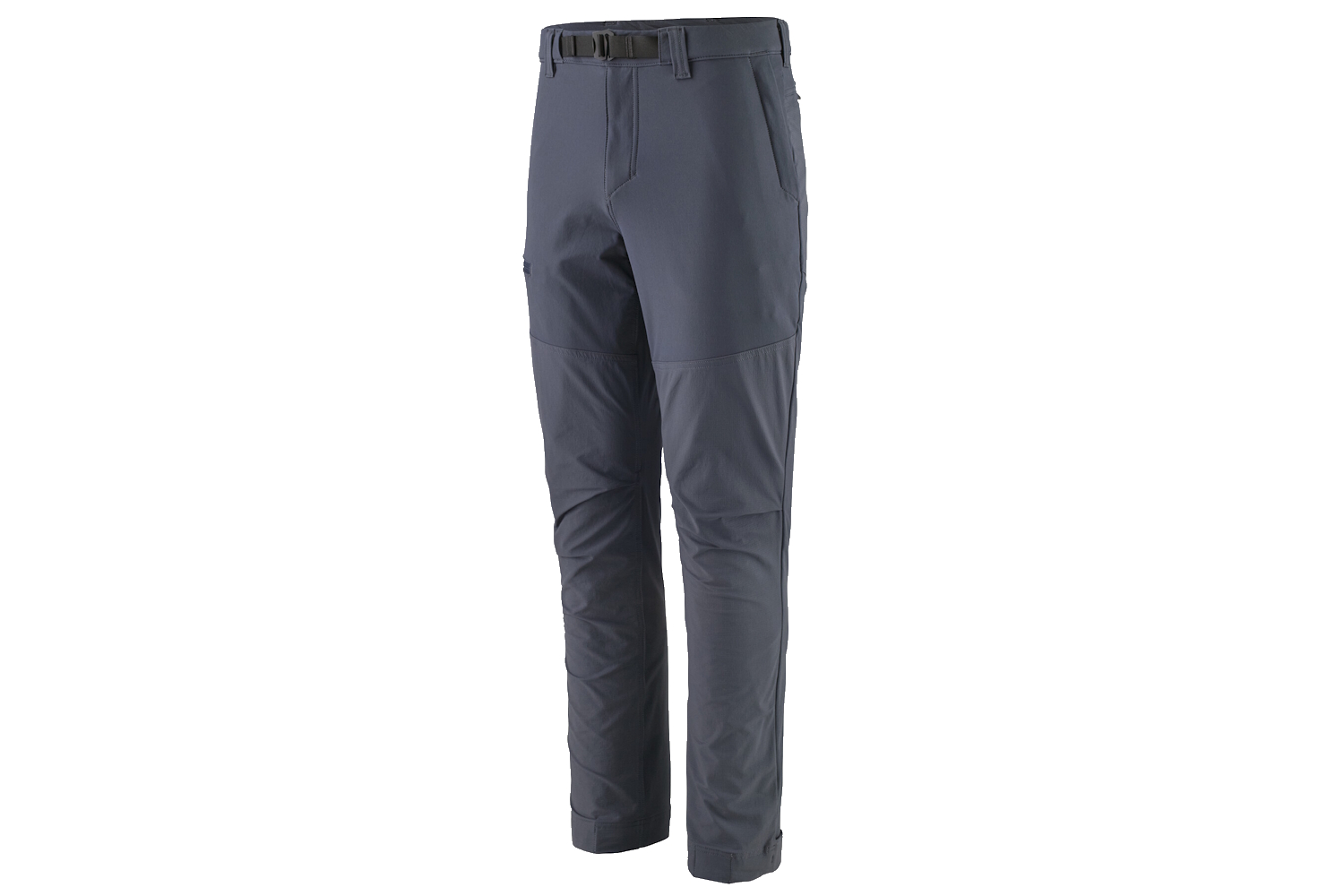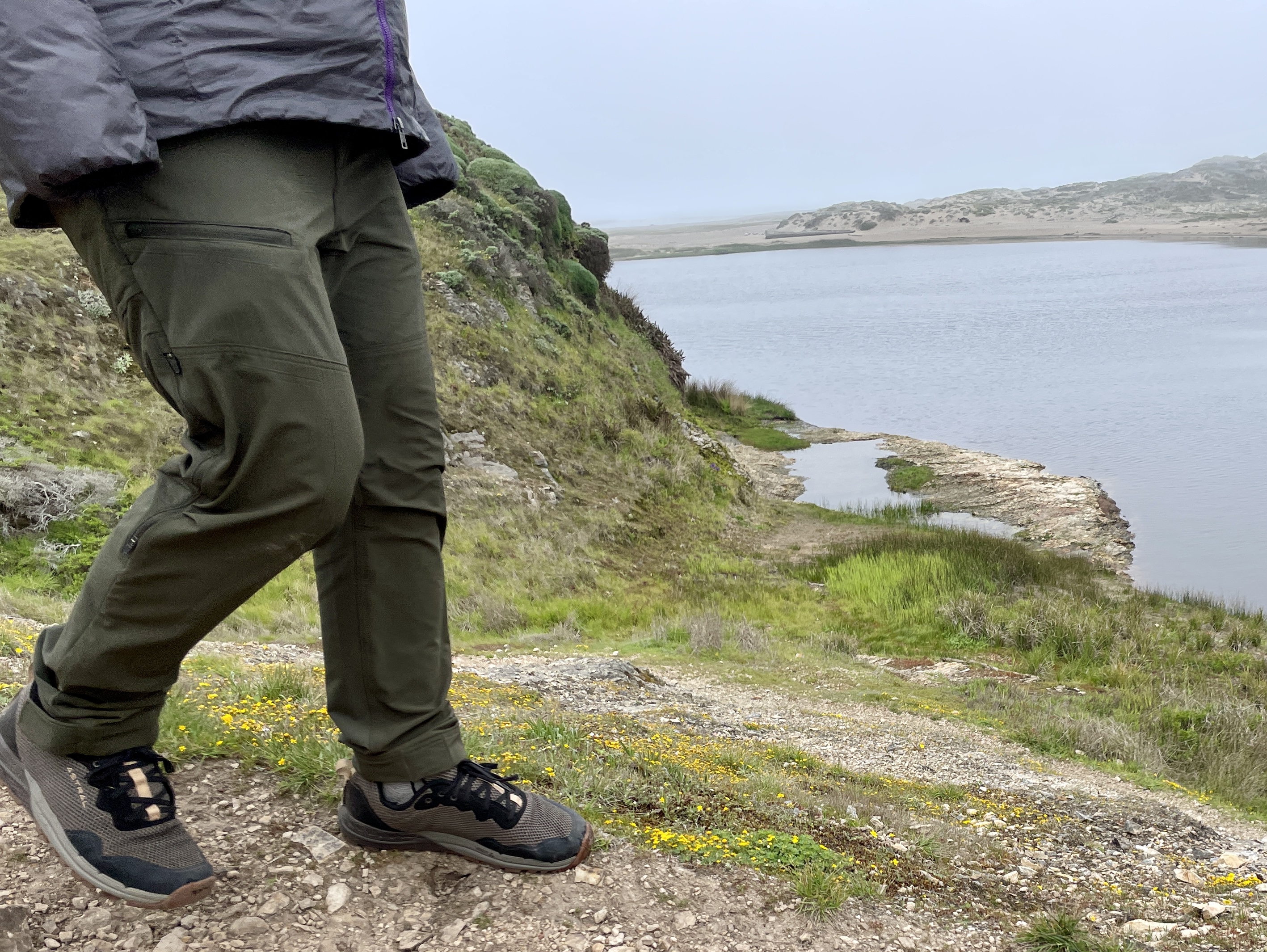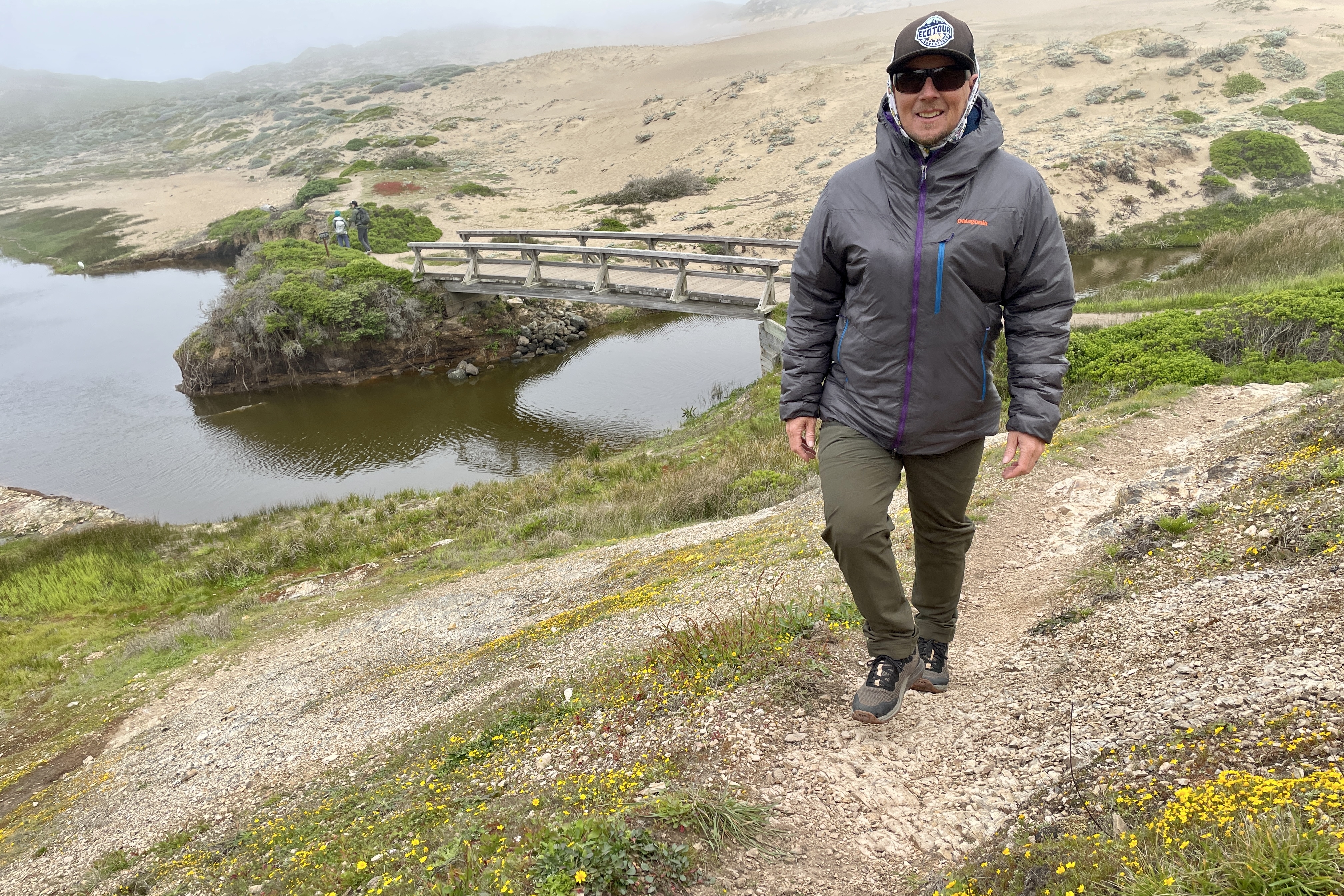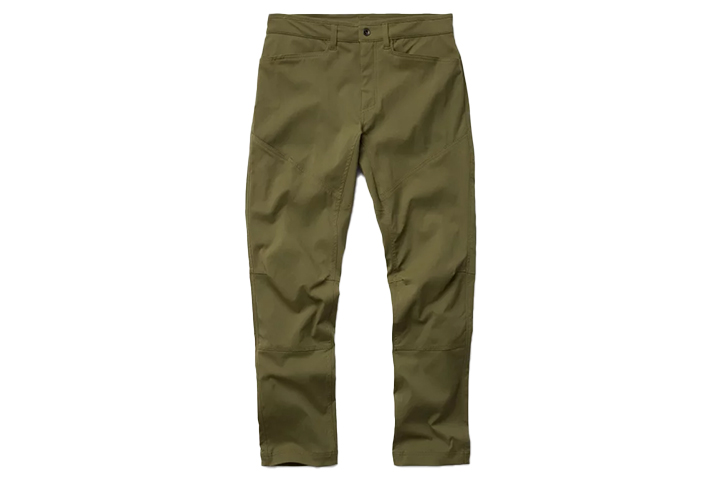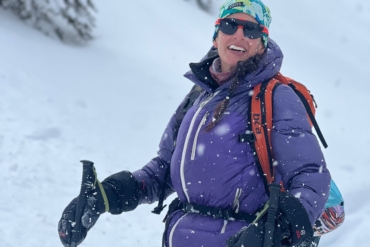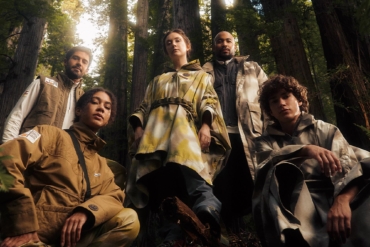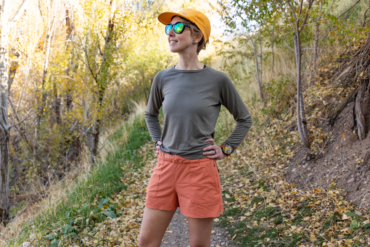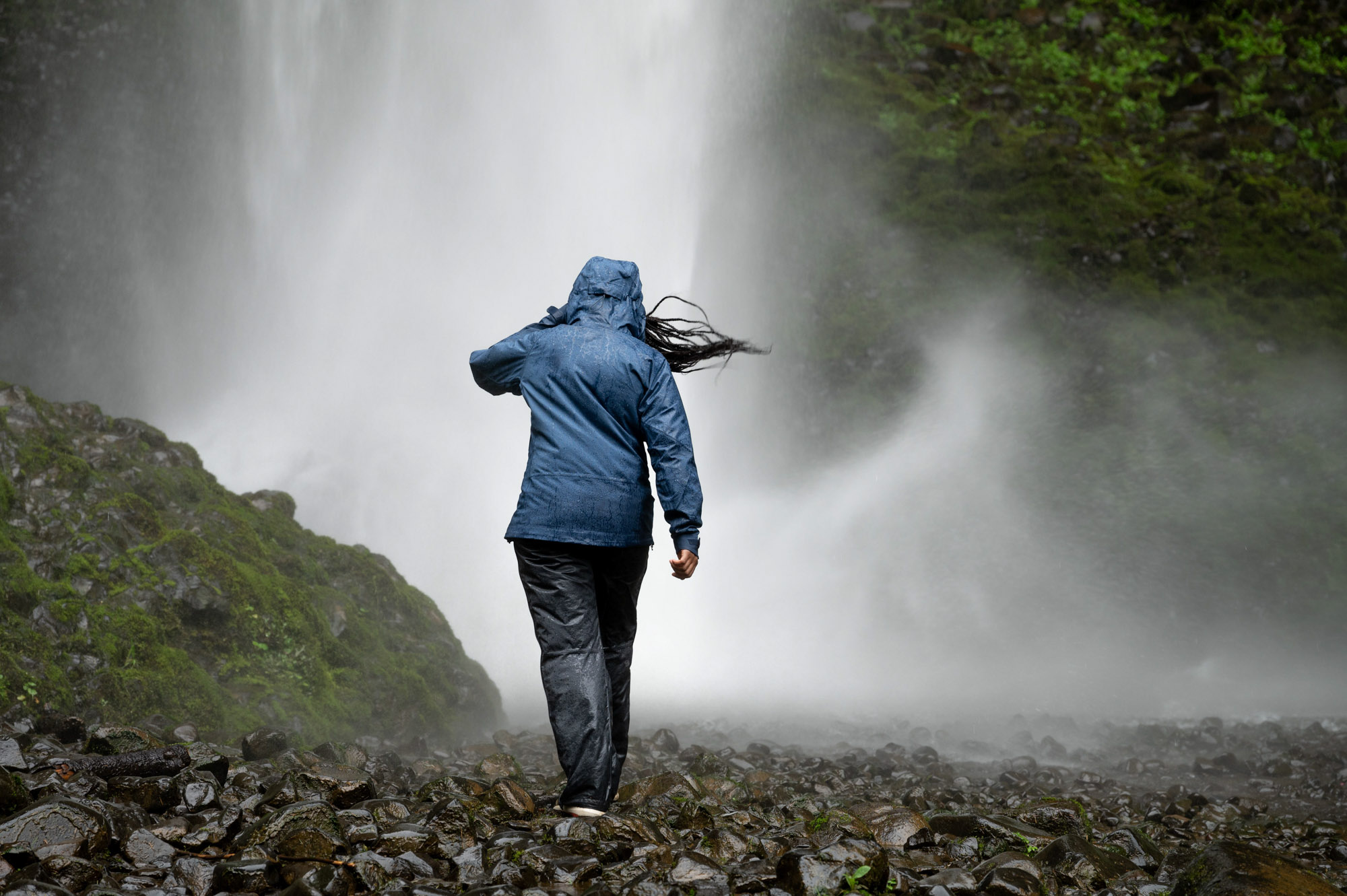Whether you’re out for a casual stroll or tackling 20-mile days through rugged terrain, the best men’s hiking pants can make all the difference. Over the past five years, we’ve tested more than 50 pairs, and this year alone, lead testers Rob Simpson and Ryan Kempfer put 10 top models through the wringer. From post-holing through waist-deep snow to hiking in desert heat and slogging muddy trails, we pushed each pair to the limit to evaluate comfort, durability, performance, and value.
Our top pick, the Outdoor Research Ferrosi Pants, delivers outstanding mobility and all-around performance. For budget-conscious hikers or anyone needing a backup pair, the REI Co-op Trailmade Pants are a solid value. Whatever your adventure, we’ve got the best hiking pants to match.
Editor’s Note: On August 10, 2025, we updated this guide with new picks for changing seasons, including the REI Co-op Activator Pants, an ideal option for shoulder-season hikes, the rugged and reliable Fjallraven Keb Trousers, and the versatile Mountain Hardwear AP Active Pants. We also added detailed product ratings to further explain our testing system.
The Best Hiking Pants for Men of 2025
Outdoor Research Ferrosi Pants – Men’s
-
Comfort/Mobility
9.8
-
Weather Protection
9.0
-
Breathability
8.9
-
Versatility
8.8
- Fabric: 87% 90-denier stretch-woven ripstop nylon, 14% spandex
- Fit: Straight, true to size
- Weight: 10.7 oz.
- DWR: Water-resistant fabric
- UPF: 50+
Pros
- Lightweight but durable
- Breathable
- Incredible, flexible fit
Cons
- Small back pockets
- Won't last as long as heavier pants
REI Co-op Trailmade Pants
-
Comfort/Mobility
8.7
-
Weather Protection
7.0
-
Breathability
6.5
-
Versatility
8.0
- Fabric: 94% nylon, 6% spandex (Bluesign approved)
- Fit: True to size – slim fit
- Weight: 9.8 oz.
- DWR: Yes
- UPF: 50+
Pros
- Lightweight
- Affordable
- Quick-drying
- Great color options and accent pockets
- Fit/style – internal drawstring adjust
Cons
- Small mesh front pockets
- Small belt loops won't fit standard 1.5-inch belt
Fjällräven Vidda Pro Ventilated
-
Comfort/Mobility
8.0
-
Weather Protection
9.5
-
Breathability
7.8
-
Versatility
7.5
- Fabric: 65% polyester/35% cotton (organic)
- Fit: True to size — great fit
- Weight: 19.4 oz.
- DWR: Water-resistant G-1000
- UPF: No
Pros
- Heavy-duty durable pants
- Lots of features
- Fantastic look and fit
Cons
- Heavy
- Expensive
Patagonia Quandary Pants — Men’s
-
Comfort/Mobility
8.0
-
Weather Protection
8.9
-
Breathability
7.5
-
Versatility
9.0
- Fabric: 94% nylon (65% recycled), 6% spandex
- Fit: Standard
- Weight: 10 oz.
- DWR: Yes
- UPF: 40+
Pros
- Affordable
- Flexible fabric
- Lightweight
Cons
- Few pockets
- Thin build doesn't provide as much protection as others
REI Co-op Activator Pants
-
Comfort/Mobility
8.3
-
Weather Protection
8.8
-
Breathability
8.4
-
Versatility
7.6
- Fabric: 63% nylon, 26% polyester, 11% spandex (Bluesign approved)
- Fit: Standard
- Weight: 15.1 oz
- DWR: PFC-free
- UPF: 50+
Pros
- Excellent wind and light rain resistance
- Durable breathable fabric with plenty of stretch
- Comfortable standard fit with room to layer
Cons
- No built-in waist adjustment
- Too warm for hot-weather hikes
Black Diamond Alpine Light Pants – Men’s
-
Comfort/Mobility
9.7
-
Weather Protection
8.9
-
Breathability
8.0
-
Versatility
9.1
- Fabric: 85% nylon, 15% elastane
- Fit: Slim, true to size
- Weight: 11 oz.
- DWR: Yes
- UPF: No
Pros
- Solid stretch and durability
- Secure, effective belt closure
- Comfortable
- Lightweight
- Durable
Cons
- Pockets are shallow
Rab Incline Light Pants
-
Comfort/Mobility
9.6
-
Weather Protection
8.9
-
Breathability
9.8
-
Versatility
9.3
- Fabric: 93% polyamide, 7% elastane
- Fit: Slim
- Weight: 7.9 oz.
- DWR: Yes
- UPF: No
Pros
- Ultralight
- Great next-to-skin comfort
- Solid mobility
- Packable
Cons
- A bit too tight in some areas
- Light fabric is not as inherently durable as others
More Men’s Hiking Pants That Crush It
-
Comfort/Mobility
7.6
-
Weather Protection
9.0
-
Breathability
7.2
-
Versatility
6.9
- Fabric: G-1000 (65% polyester, 35% cotton), stretch panels (63% polyamide, 26% polyester, 11% elastane)
- Fit: True to size
- Weight: 19.75 oz. (size 30R)
- DWR: Waxable water-resistance on G-1000 panels
- UPF: 50+
Pros
- Durable and protective
- Good ventilation
- Spacious pockets
- Built-in gaiters
Cons
- Heavy
- Too warm for hot weather
-
Comfort/Mobility
7.2
-
Weather Protection
6.9
-
Breathability
9.3
-
Versatility
9.7
- Fabric: 96% recycled nylon, 4% spandex (Bluesign approved)
- Fit: True to size – a little baggy
- Weight: 13.6 oz.
- DWR: Yes – water resistant
- UPF: 50+
Pros
- Versatility
- Great fitting shorts with 2 large cargo pockets including
- Ease of zip on/off of the legs
Cons
- Look and fit of the pants at the thighs
-
Comfort/Mobility
8.1
-
Weather Protection
6.7
-
Breathability
8.3
-
Versatility
7.4
- Fabric: 92% recycled nylon, 18% spandex
- Fit: Athletic
- Weight: 9.4 oz.
- DWR: No
- UPF: 50+
Pros
- Quick drying and breathable
- Lightweight
- Total mobility
- Waistband adjustment to dial in the fit
- Secure zippered pockets
Cons
- Lack weather-resistance
- Stylish
- Inner pocket mesh lacks durability
-
Comfort/Mobility
7.0
-
Weather Protection
6.9
-
Breathability
7.8
-
Versatility
7.9
- Fabric: 95% nylon/5% spandex
- Fit: "Klassik" fit – Neither slim, nor relaxed
- Weight: 18.5 oz.
- DWR: Water-resistant
- UPF: 50+
Pros
- Loaded with pockets
- Breathable
- Versatile
- Quick-drying
Cons
- Shorts are a bit short
- No zipper at bottom/need to take off boots to change to shorts
-
Comfort/Mobility
8.3
-
Weather Protection
7.8
-
Breathability
6.0
-
Versatility
7.6
- Fabric: 88% nylon, 12% elastane
- Fit: True to size
- Weight: 12 oz.
- DWR: Yes
- UPF: No
Pros
- Super durable
- Very comfortable
- Great four-way stretch
- Versatile
Cons
- Expensive
- Low breathability
-
Comfort/Mobility
7.5
-
Weather Protection
8.4
-
Breathability
6.0
-
Versatility
7.1
- Fabric: 47% recycled polyamide, 41% polyamide, 12% elastane; lining: 100% polyester
- Fit: Straight to slim
- Weight: 15.8 oz.
- DWR: Yes
- UPF: No
Pros
- Durable design but solid mobility
- Velcro adjusted waist
- Reinforced insteps
- Adjustable bottom leg
Cons
- Heavy
- On the pricey side
-
Comfort/Mobility
7.8
-
Weather Protection
6.3
-
Breathability
7.0
-
Versatility
7.4
- Fabric: 95% nylon, 5% spandex
- Fit: Length is short – see comment on website about sizing/inseam length
- Weight: 12 oz.
- DWR: Yes – water resistant
- UPF: 50+
Pros
- Great look and feel
- Plentiful pockets
- Elastic waist eliminates sag or need for a belt
Cons
- Not very “water-resistant”
- Hit at ankle/are short unless you order a longer inseam
-
Comfort/Mobility
8.5
-
Weather Protection
9.0
-
Breathability
6.0
-
Versatility
6.5
- Fabric: 91% recycled nylon/9% spandex
- Fit: Slim
- Weight: 1 lb., 3 oz.
- DWR: DWR finish
- UPF: No
Pros
- Highly weather-resistant
- Comfortable yet durable
- Adjustable ankle closure fits over boots and shoes
- Built-in hook keeps out debris
Cons
- Heavy
- No venting options
-
Comfort/Mobility
7.5
-
Weather Protection
6.4
-
Breathability
6.3
-
Versatility
6.8
- Fabric: 97% nylon, 3% elastane
- Fit: Standard
- Weight: 12.2 oz
- DWR: PFC-free
- UPF: No
Pros
- Durable canvas-style fabric that holds up to trail abuse
- Clean styling transitions well from trail to town
- Subtle stretch and articulation for good mobility
Cons
- Runs warm in hot weather
- Not ideal for fast-paced or ultralight missions
Hiking Pants Comparison Chart
| Hiking Pants | Price | Fabric | Fit | Weight | DWR | UPF |
|---|---|---|---|---|---|---|
| Outdoor Research Ferrosi Pants | $99 | 87% nylon, 14% spandex | Straight, true to size | 10.7 oz. | Water-resistant fabric | 50+ |
| REI Co-op Trailmade Pants | $69 | 94% nylon, 6% spandex (Bluesign approved) | True to size — great fit | 9.8 oz. | Yes | 50+ |
| Fjallraven Vidda Pro Ventilated | $180 | 65% polyester/35% cotton (organic) | True to size — a little baggy | 19.4 oz. | Water-resistant G-1000 | No |
| Patagonia Quandary Pants | $99 | 94% recycled nylon, 6% spandex | Standard | 10 oz. | Yes | 40+ |
| REI Co-op Activator Pants | $99 | 63% nylon, 26% polyester, 11% spandex (Bluesign approved) | Standard | 15.1 oz | PFC-free | 50+ |
| Black Diamond Alpine Light | $125 | 85% nylon, 15% elastane | Slim, true to size | 11 oz. | Yes | No |
| Rab Incline Light Pants | $95 | 93% polyamide, 7% elastane | Slim | 7.9 oz. | Yes | No |
| Fjallraven Keb Trousers | $240 | G-1000 (65% polyester, 35% cotton), stretch panels (63% polyamide, 26% polyester, 11% elastane) | True to size | 19.75 oz. (size 30R) | Waxable water-resistance on G-1000 panels | |
| REI Co-op Sahara Convertible Pants | $79 | 96% recycled nylon, 4% spandex (Bluesign approved) | True to size – a little baggy | 13.6 oz | Yes — water resistant | 50+ |
| Mammut Runbold IV Pants | $119 | 92% recycled nylon, 18% spandex | Athletic | 9.4 oz. | No | 50+ |
| Kuhl Renegade Convertible Pants | $139 | 95% nylon/5% spandex | Full Fit | 18.5 oz. | Yes — water resistant | 50 |
| Arc’teryx Gamma | $200 | 88% nylon, 12% elastane | True to size | 12 oz. | Yes | No |
| Helly Hansen Blaze Softshell Pants | $160 | 47% recycled polyamide, 41% polyamide, 12% elastane | Straight to slim | 15.8 oz. | Yes | No |
| KÜHL Renegade Recon Pants | $99 | 95% nylon, 5% spandex | Length is short – see comment on website about sizing/inseam length | 12 oz. | Yes | 50+ |
| Patagonia Terravia Peak Pants | $129 | 86% recycled polyester, 14% spandex | Standard | 11.1 oz. | Yes | No |
| Mountain Hardwear AP Pants | $99 | 97% nylon, 3% elastane | Standard | 12.2 oz | PFC-free | No |
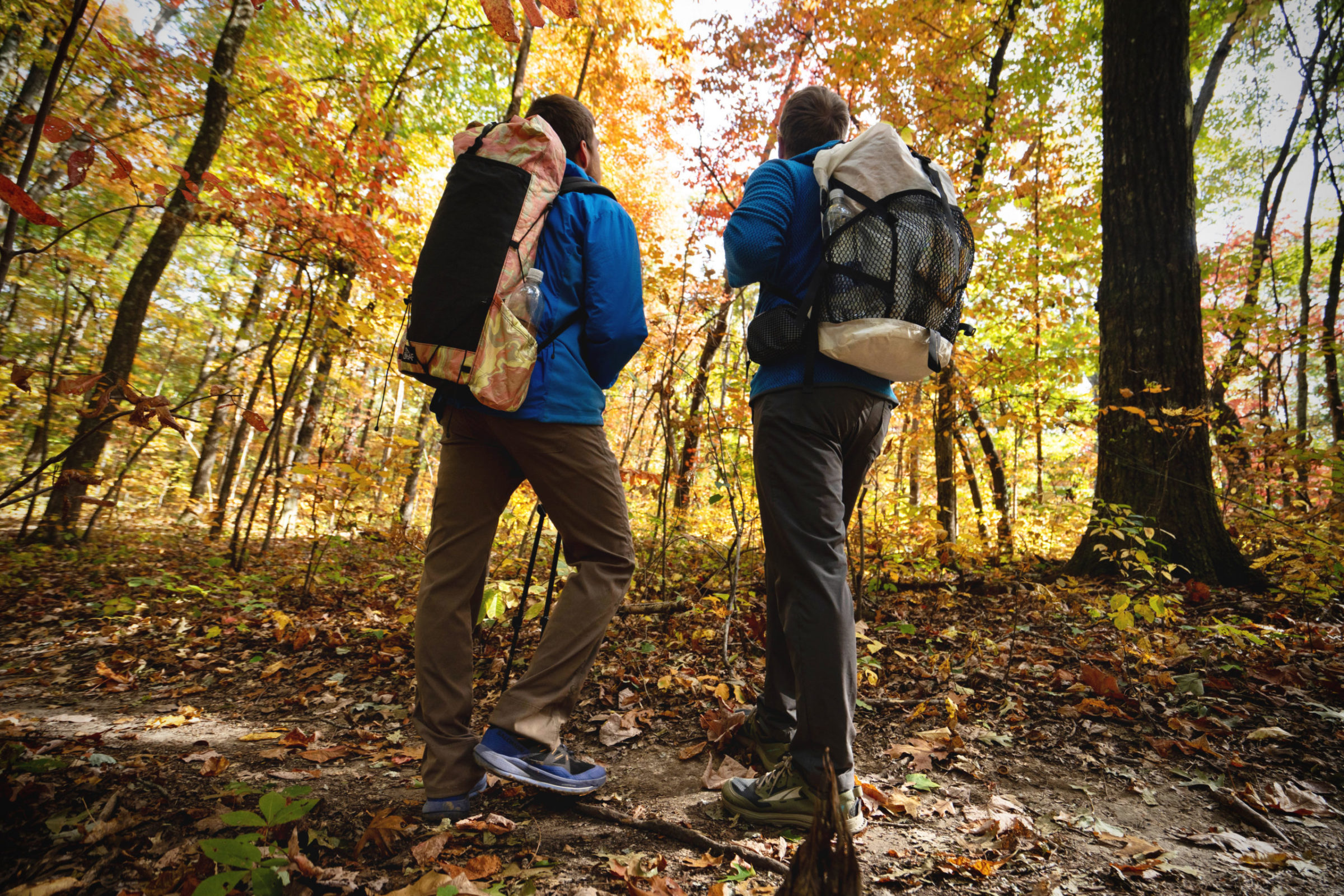
How We Tested Hiking Pants
Our Expert Testers
Lifelong gear testers Justin La Vigne and Steve Graepel led the charge with this guide back in July 2020, settling on our initial roundup of nine pants. Both are seasoned backpackers, hikers, and all-around outdoorsmen who know the importance of a solid pair of pants for all-day comfort on the trail.
Senior Editor Chris Carter took over this guide in August 2022 when he began rifling through his closet, scouring the interwebs, and incessantly bugging the pros to narrow in on the streamlined selection of pants.
In 2024, Rob Simpson and Ryan Kempfer took over this guide. As a college student in Southern California, Rob got his first outdoor job as a camp counselor and backpacking guide just outside Yosemite National Park. Off and on for the next 25+ years, Rob led backpacking, rock climbing, and winter camping trips all over the Sierra Nevada range. Now Rob lives in Salida, Colo., where he loves hiking countless 14ers and exploring all the Continental Divide and the Rockies have to offer.
Ryan is an avid outdoorsman who loves skiing and hiking and combining both for backcountry pursuits. He lives and works as a guide in the Tetons, where he puts gear through the wringer on a daily basis, both for fun and work.
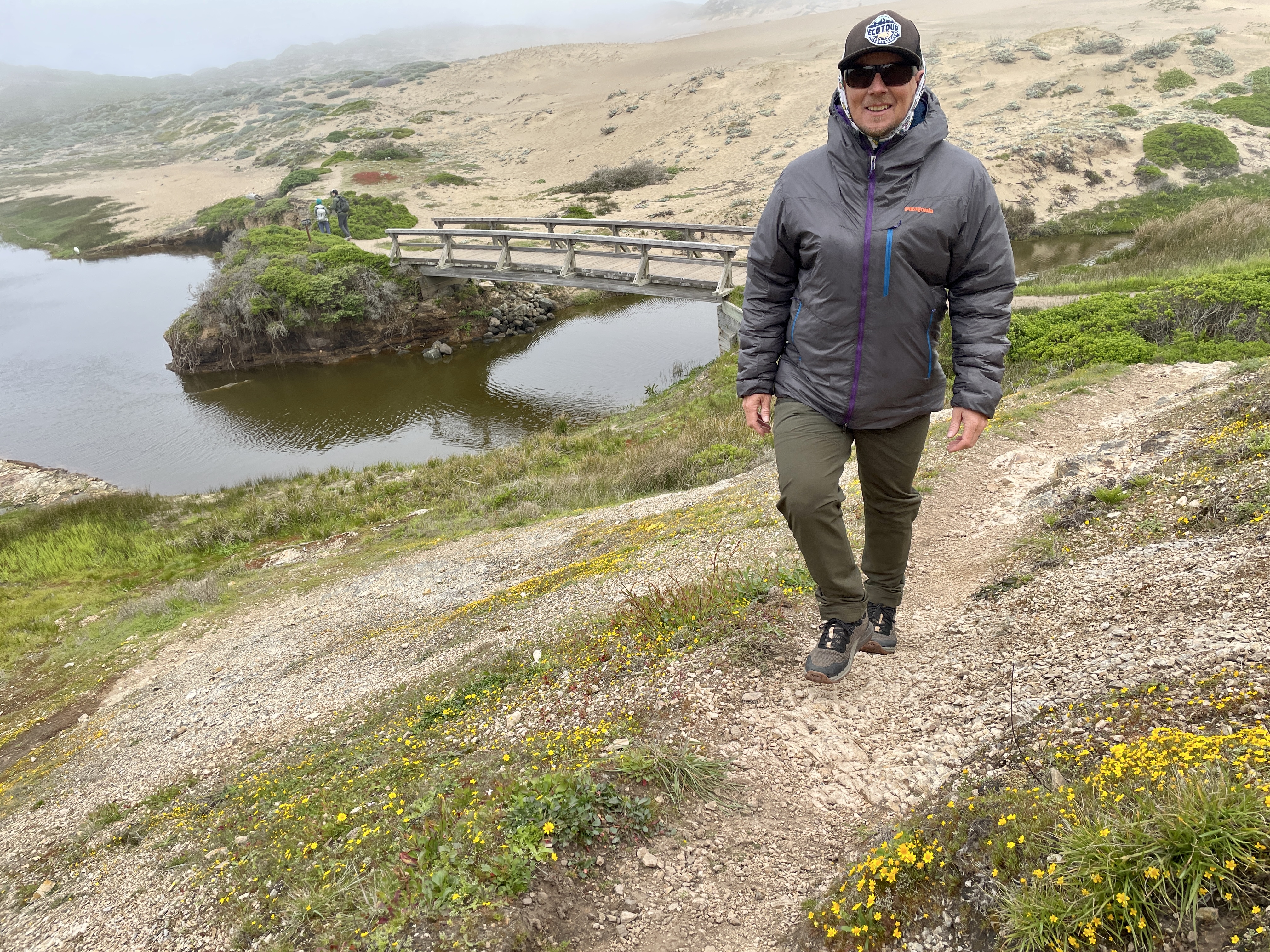
Our Testing Process & Grounds
It’s no exaggeration to say the GearJunkie squad has collectively clocked tens of thousands of miles on trails all over the world with these hiking pants. Not all hiking pants are created equal, and we know what makes a pair worthy of any real estate in our hiking loadout.
Together, we have tested each of the pants in this guide on real-world adventures and feel confident recommending any of them for long hikes or demanding backpacking trips. We have thru-hiked the Triple Crown of long trails in the United States, climbed Colorado’s fourteeners, and put thousands of miles on these pants by hiking through different climates and terrain. We know what to look for in trekking clothes that must last for months of torture.
To fully kit yourself out, consult our guide to the best hiking boots or best hiking shoes. And, if you’re looking for women’s-specific pants, check out our guide to the Best Hiking Pants for Women.
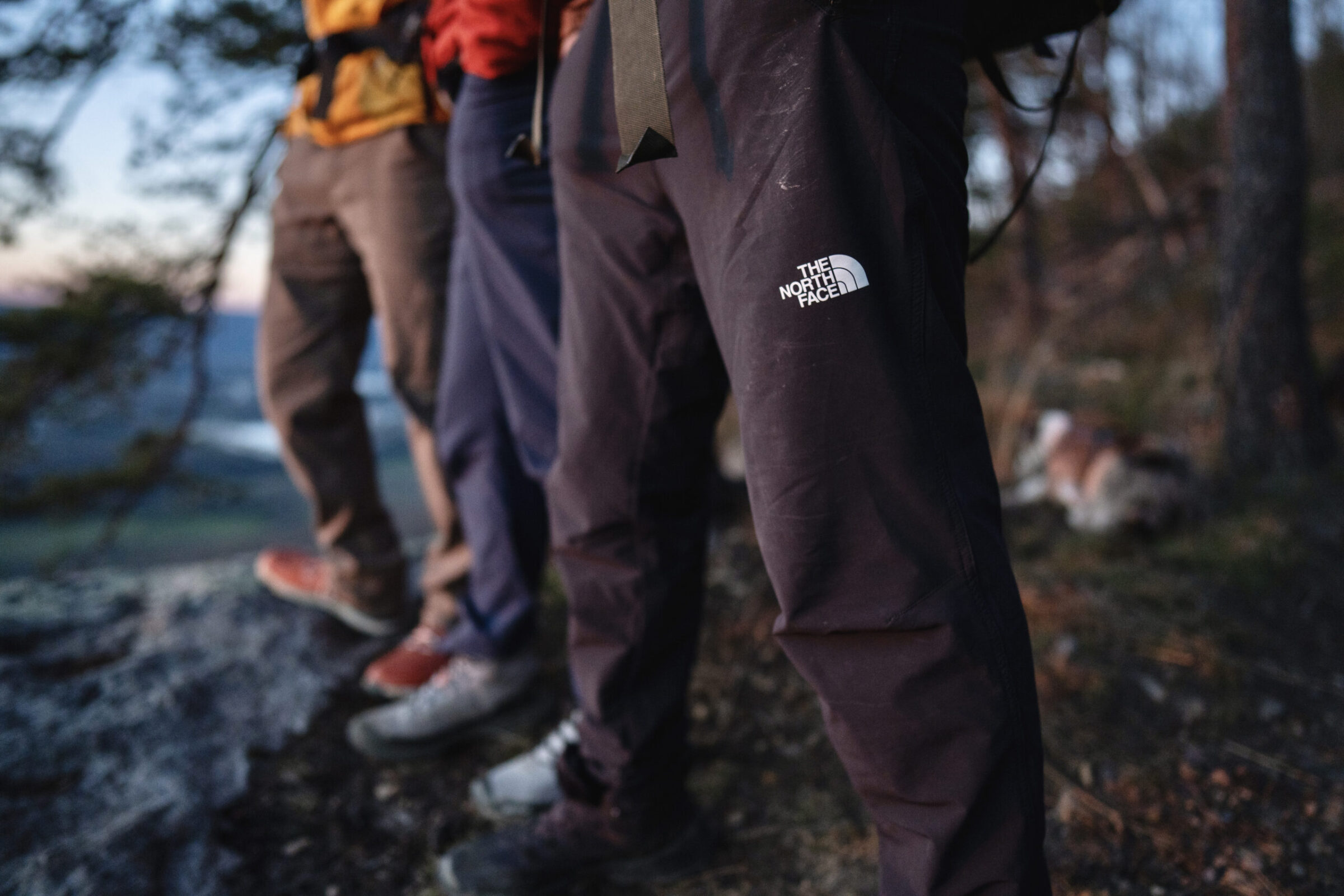
Our Men’s Pants Rating System
We evaluated each pair of pants in four categories, using a 1–10 scale. Comfort/Mobility considers fit, stretch, and how freely you can move. Weather Protection looks at resistance to wind, light precipitation, and abrasion. Breathability measures how well the fabric manages heat and moisture, as well as any ventilation features like zippers or paneling. Versatility reflects the ability to perform across a variety of climates, terrains, and activities.
Note: The overall score represents our testers’ full impression of performance after extended use, and is not a calculation based on the category scores.
Buyer’s Guide: How to Choose the Best Hiking Pants
Hiking pants are important investments for all-day comfort on trail and need to be chosen wisely before setting off on your adventure. The type of terrain you plan to encounter on your trip, the temperatures you will be hiking in, and the level of exposure to the sun all factor into which model would be the best for your needs.
Continue reading to help narrow down the selection and find the perfect pair of pants.
Pant Length & Versatility
Hiking pants come in three main options: full-length, convertible, and roll-up. Full-length pants are a great option for complete leg protection, even in the summer. To combat overheating, most pants have mesh pockets or vents.

Convertible pants like the REI Sahara Convertible Pants and the KÜHL Renegade Convertible Pants are the ultimate 2-in-1. The legs zip off and can be worn as shorts or pants. They’re a great option for variable weather and multiday hikes where you want more options and less gear to pack, but it’s tough to find a pair that doesn’t look goofy.
Pulling the legs off without removing your hiking boots is also nice, which is why the KÜHL Renegade Convertibles fall short. REI’s option has a zipper that makes conversion easy and fast, but the KÜHLs’ redesign lacks this zipper, so you must remove your boots or shoes.

Roll-up pants are somewhere between full-length and convertible. A tab, button, or drawcord secures the cuff when rolled up. The alpine-centric Arc’teryx Gamma Pants are a heavier, more durable model that we’d hesitate to wear on the hottest summer days. However, it also has useful drawcords on the cuffs, so it’s easy to pull them up and get some airflow on the calves. Drawcords around the ankles can keep the cuffs secured up around the legs. Pants without them will need to be rolled up.
The Patagonia Terravia Peak Pants have a hook closure at the bottom of their cuff, which acts as a built-in gaiter when hooked to your boot laces. This feature makes these pants one of our favorites for the shoulder season or for hikes with a lot of bushwhacking or walking through scree fields.
Mobility
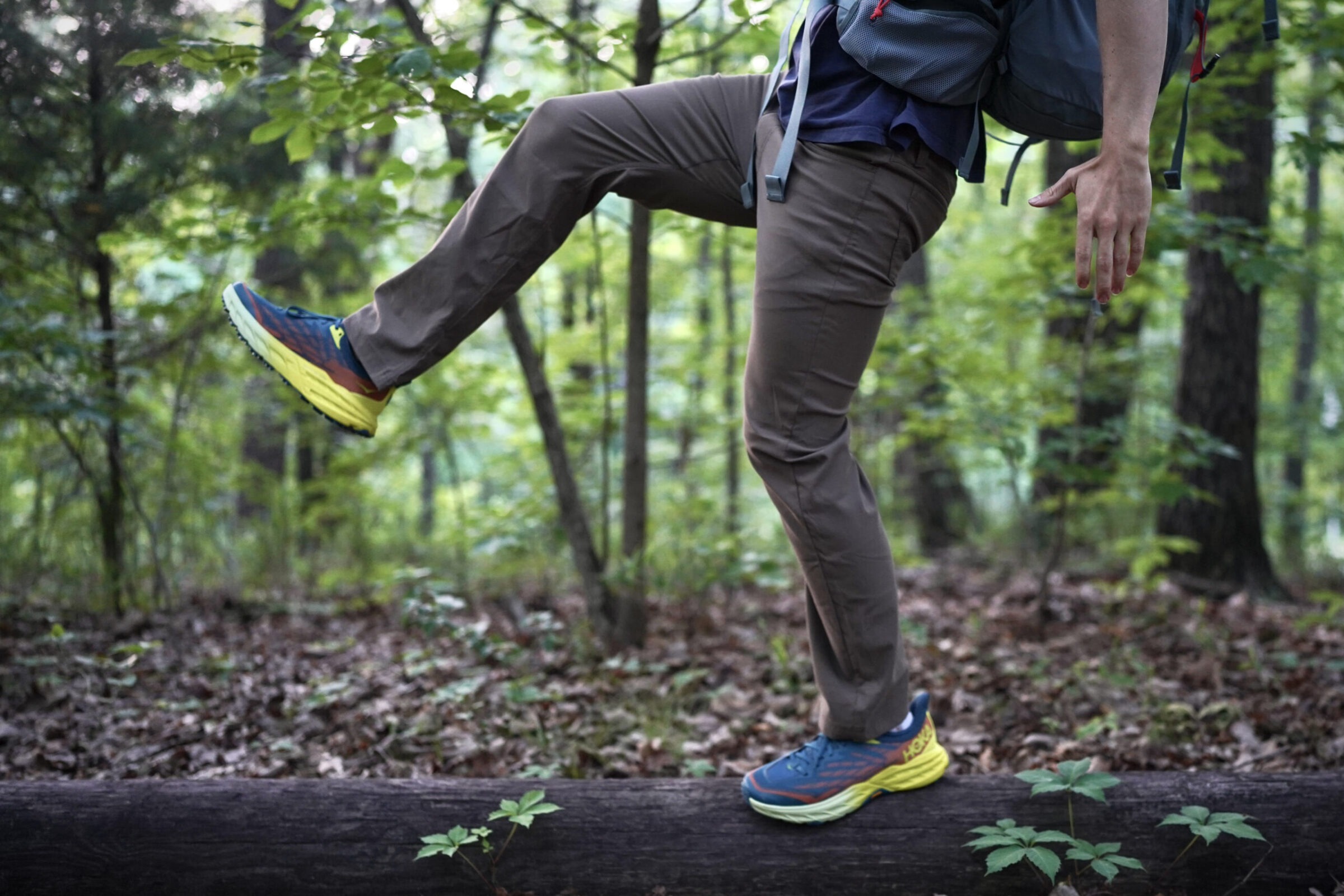
Being able to move freely in hiking pants is a major concern. Whether running down the trail or scrambling up a rocky patch, you don’t want your pants restricting your movement.
This is where design features like a gusseted crotch, articulated knees, and stretchy materials prove useful. And because everybody is shaped differently, it can be helpful to try on a few pairs before buying to ensure a snug (but comfortable) fit. It’s also important to consider that you may need to find the right belt to help secure your pants comfortably around the waist.
Some pants run slim and restrict movement. Conversely, Black Diamond’s Alpine Light Pants and the Outdoor Research Rialto Fleece Lined Pants strike a perfect balance of lightweight durability and mobility.
It’s also important to consider how comfortable your pants will be when wearing a fully loaded backpacking backpack. Make sure they fit you well so you don’t have to wear a belt to keep them up, as that could rub uncomfortably against your pack as you hike.
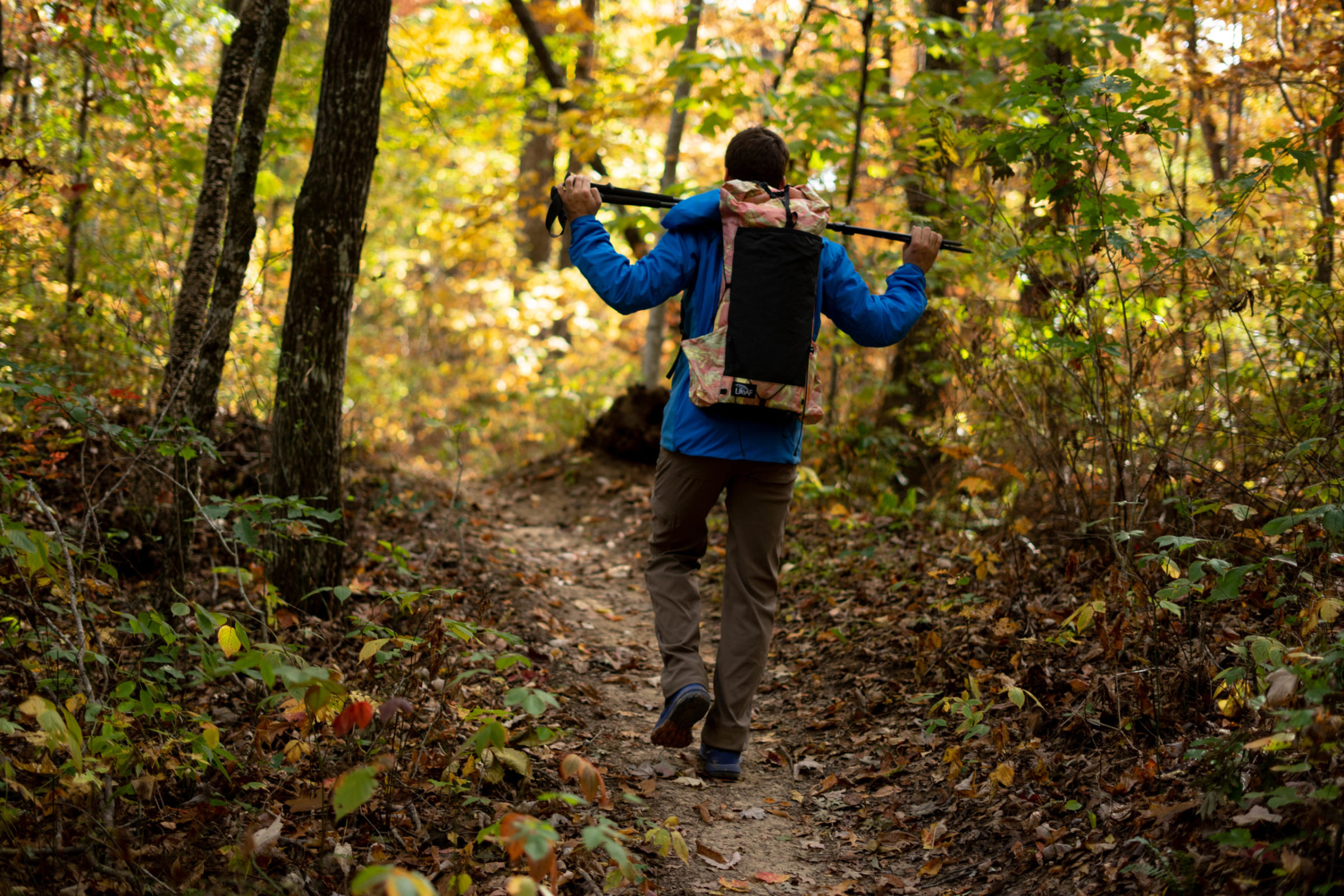
Weather Protection
Just because you’re wearing pants doesn’t mean you’re safe from the sun’s damaging rays. If you are hiking on extremely sunny days, look for pants with rated UPF protection of 40 or 50.
A DWR coating like we see in the Outdoor Research Ferrosi Pants or the Patagonia Terravia Peak Pants doesn’t make pants completely waterproof, but it adds enough wet-weather protection to keep you dry while hiking through dewy brush or in light showers. DWR keeps water droplets on the exterior, allowing them to simply roll off.
DWRs will eventually wash out over time. For optimal performance, you’ll want to treat heavily used hiking pants on occasion. Nikwax Softshell Proof Wash-In is an easy way to keep your pants repelling water year after year.

And if you don’t want pants with DWR, the Fjällräven Abisko Midsummer Pants are a great option. Fjällräven steers clear of DWR and instead sells an aftermarket wax that you can apply to beef up the water resistance.
These additions start to creep up the cost of pants. However, our budget choice, REI’s Trailmade Pants does have a DWR and UV protection and is an incredible value.
Additionally, weather protection can make pants a bit heavier and less mobile — factors to consider when thinking about your hiking objectives. We personally don’t place DWR treatment high on our wish list when shopping for hiking pants, as we generally throw on a dedicated pair of rain pants if the heavens truly open up. Some hikers do like them for light rain and mist, however.
Additional Features for Hiking Pants

What Do You Really Need?
The little extras can really make or break a good pair of pants. Some of the features available are well-positioned cargo pockets, zippered pockets, belt loops, and built-in belts. Whether you want these or not depends on your personal hiking plans and style.
In general, you want your hiking pants to have a healthy features-to-weight balance like we found in the Fjällräven Vidda Pro Ventilated Trousers. Lightweight breathability is of utmost importance in most hiking scenarios, and many features are just plain gimmicky without adding much utility to your trip.
Pockets
If you enjoy carrying loads of extra trinkets in your pockets while you plod along, extra zippered and cargo pockets may be your cup of tea. If you plan on carrying most things in your backpack or hipbelt pockets, however, save some weight by snagging a slimmed-down pair of pants with only the necessities. And, consider what type of waist closure you prefer. Some pants come with a button and zipper, others a stretchy waistband and yet others like the Mammut Runbold Pants have Velcro tabs at the waist so you can dial in your fit.

Waistband
It’s also a good idea to test out your hiking pants with whatever backpack you plan on wearing for your trek, to make sure the waist feels comfortable under load, and won’t cause chafing over the long run. Integrated belt loops can be helpful in some instances, but we’ve found that they rarely feel cozy with a 30-pound pack pressing down on them.
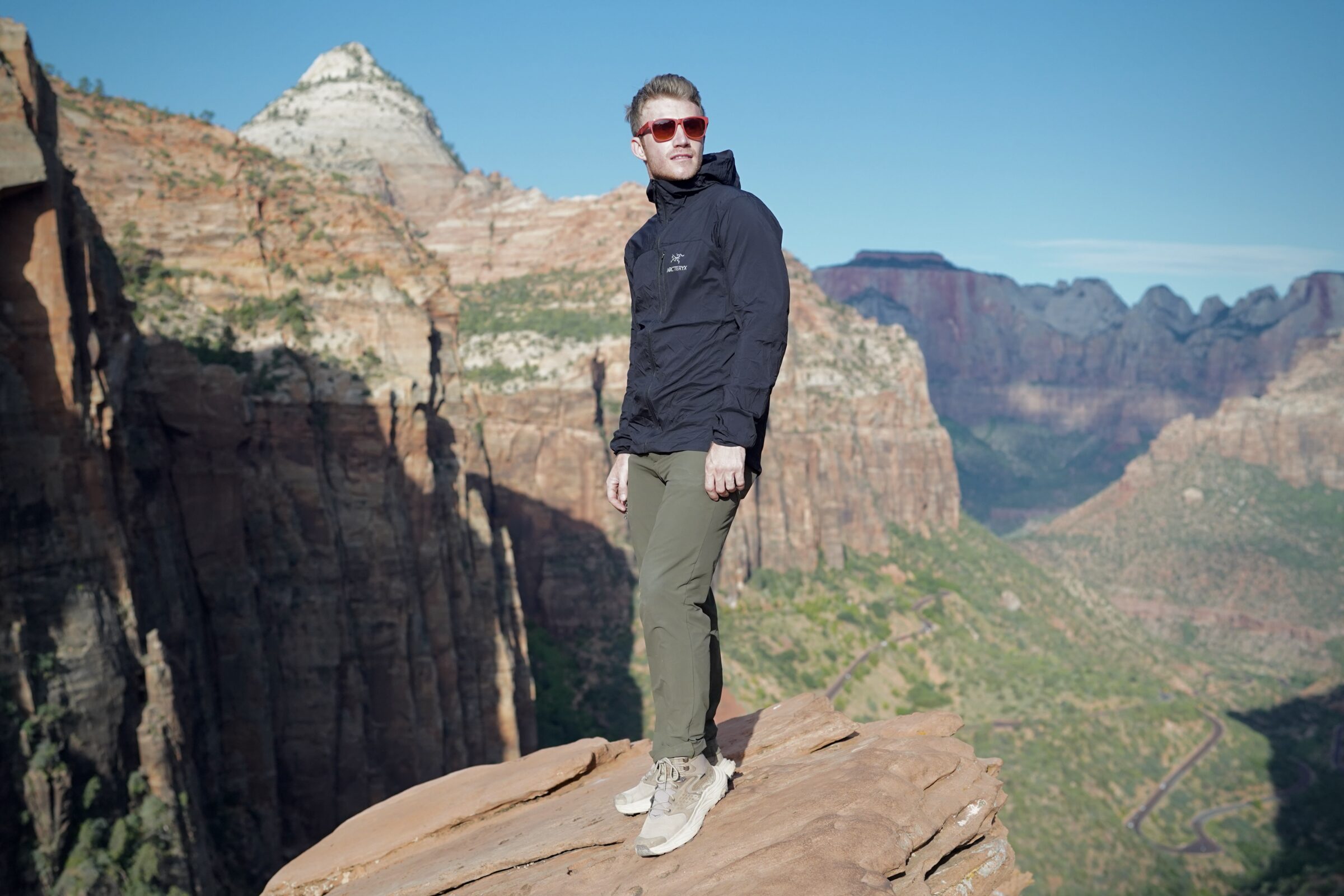
Price & Value
Budget
The least expensive pants in our review lie within the $69-89 range. At this price point, you can guarantee good hiking pants, but you will sacrifice durability and some additional features.
The best value in our lineup is the REI Trailmade Pants ($69), which fit really well and deliver extreme comfort but lack DWR protection. Patagonia’s Quandary Pants ($89) are also a great choice with articulated knees, a gusseted crotch, breathable fabric, and a DWR coating with a 40+ UPF rating. However, both of these pants have less durable-feeling fabric and small pockets.
Mid-Tier
Pants at this level will typically be around the $90-125 range. This is where a majority of hiking pants fall, and you’ll be able to find an excellent pair if you have this amount of money to spend. In this price range you’ll find pants with more features than the budget category, though the top-tier prices will be reserved for even more specialty attributes.
Our top pick, the Outdoor Research Ferrosi Pants, cost only $99. They have unmatched mobility and comfort and both UPF and DWR protection. The Black Diamond Alpine Light Pants are another great mid-tier choice that’s a bit more technical than others on the list. They’re water resistant, lightweight, incredibly durable for their weight, and they deliver excellent mobility for scrambling and boulder hopping.
Premium
The pricier hiking pants in our review fall in the $126-180 range. These pants are often made of more durable materials and have specialty features that set them apart from the rest. While mid-tier hiking pants will be just fine for most everyday hiking needs, if you need more technical pants or just more features and durability, expect to pay more.
At $139, the Kuhl Renegade Cargo Convertible Pants fall on the low edge of the category in terms of price. But, as versatile, durable, convertible pants that move with you, they are worth it. The Fjällräven Vidda Pro Ventilated Pants ($180) are so durable that they’re likely to outlast all your other gear. They also have a ton of extra bells and whistles: side vent zippered openings, large buttoned pockets, and tons of other loops, hooks, and features.
Frequently Asked Questions
It truly depends on where you are going (dry desert, humid forest, bushwhacking), how long you will be out (hours, days, weeks, months), what the weather will be like, and your personal preference. We laid out plenty of options above that cover these variables.
For long-term use, you should be looking for a pair of pants that have durability, can repel water or dry out quickly, and has features you want (pockets, belt, leg zip-offs). It’s better to consider these options initially, even if you end up dishing out more money. The best hiking pants are the ones that meet your unique needs.

Again, this is a personal preference. One of our authors hiked with a guy on the Appalachian Trail who only wore shorts for the 2,000+ miles, no matter the weather. In contrast, he mainly wore pants to protect against mosquitoes, sun, and abrasions. If it was really hot, he converted his zip-offs.
If you’re in the Sonoran desert where temps are scorching you may want the option to convert to shorts, so cut-offs may be your best option. If you’re blazing through thick brush in the Alaskan backcountry, you definitely need to protect your legs from getting cut up, so the Fjällräven Abisko Midsummer Zip Off Trousers do the trick.
Do tires for your car matter? Go ahead and hike in your work pants, jeans, or sweatpants, and then try a technical pair from the list above — that should answer your question. If you are just getting started, try a pair of less expensive pants like the Columbia Silver Ridge Cargo Pant, then work your way up as you determine what features you’d prefer.
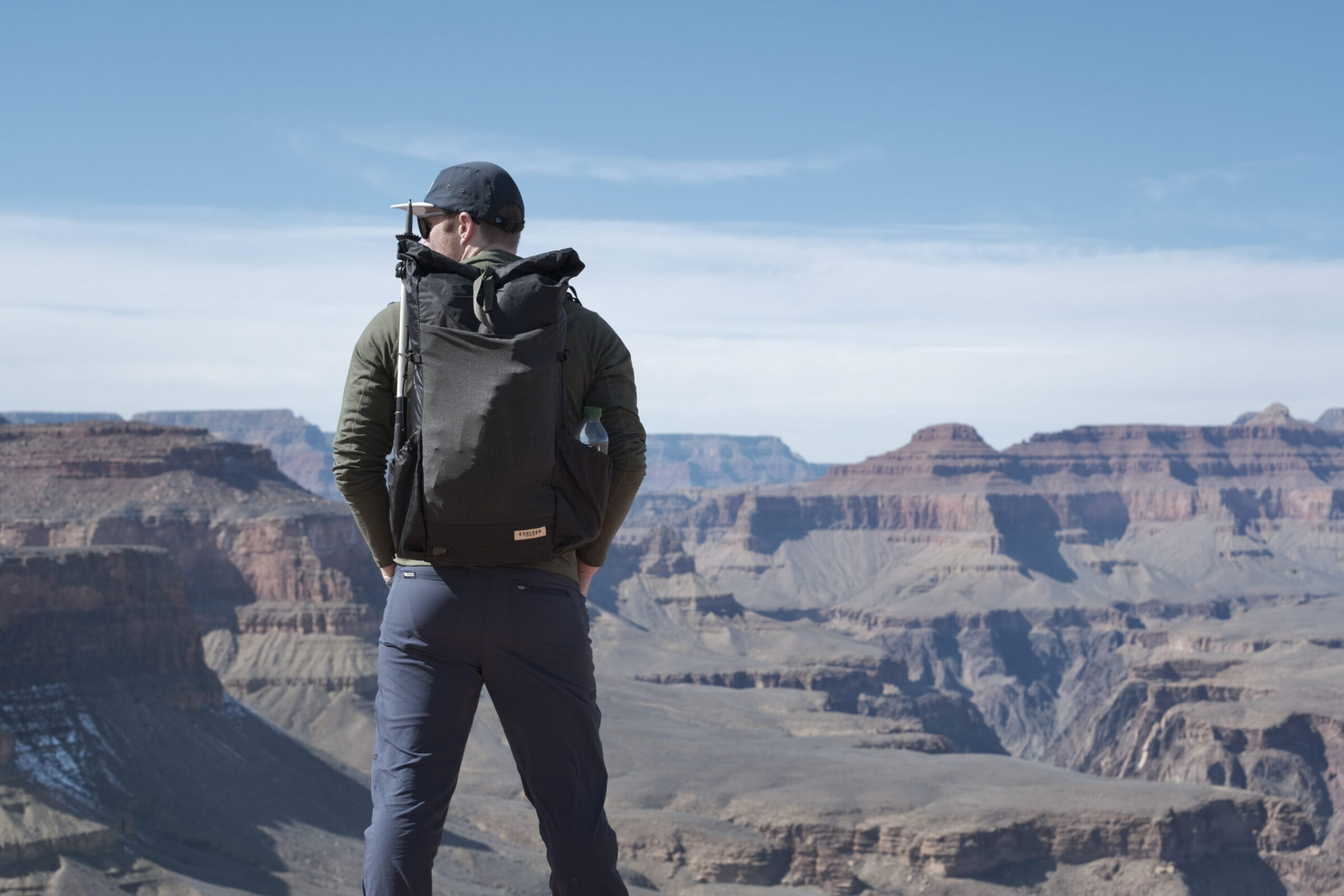
It’s always best to wear and pack layers when hiking. You want to think of your body as an onion with the option to layer down. Loose clothing with breathability is ideal, ensuring that you’ll stay cool and wick away moisture. Having clothing that has UPF of 40-50 within the blend of materials can help with avoiding sunburn.
If you’re in buggy areas, having clothing with or treating your clothing with some type of bug repellent can help keep those pesky mosquitos, ticks, and sandflies away. Lastly, color is important. Keep your clothing, including your pants, on the lighter side, such as light beige, gray, or cream. Darker colors tend to absorb heat, while lighter colors reflect it.


The Best Backpacking Backpacks of 2025
Head into the backcountry with the best backpacking backpacks of 2025. From budget-friendly options to ultra-comfortable picks, we’ve got you covered.

The Best Hiking Shoes of 2025
We tested and ranked the best hiking shoes for men and women for 2025, including top picks from Hoka, Salomon, Merrell, SCARPA, and more.

